1lumen selects and reviews products personally. We may earn affiliate commissions through our links, which help support our testing.
Olight Diffuse review
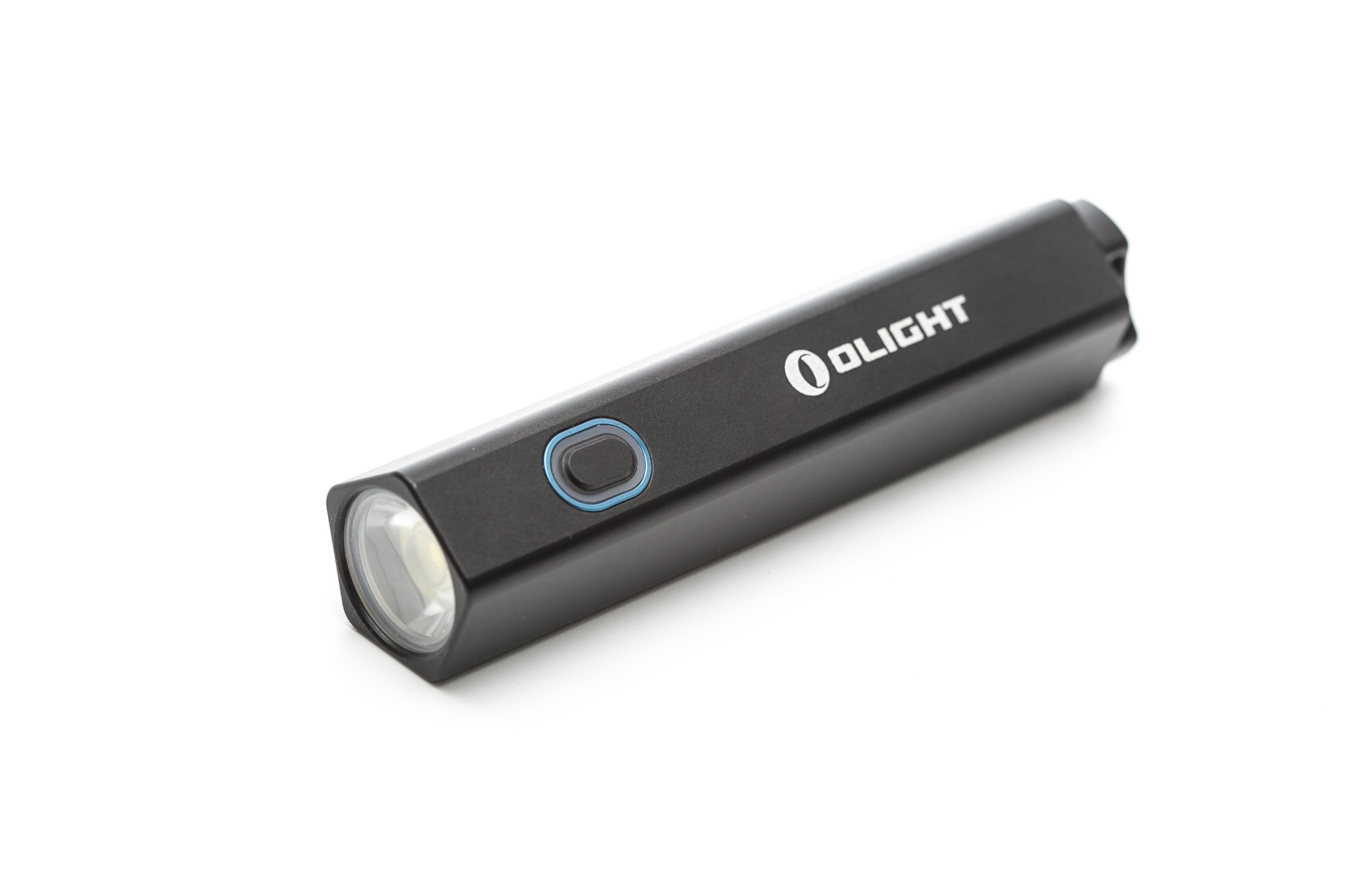
Olight Diffuse specifications
| Brand/model | Olight Diffuse |
|---|---|
| Flashlight category | EDC |
| LED | N/A |
| Max. output | 700 Lumens |
| Max. beam distance | 80 meters |
| Max. beam intensity | 1,700 cd |
| Battery config. | 14500 (not AA) |
| Onboard charging | N/A (battery with USB-C) |
| Modes | 5 |
| Blinkies | Strobe |
| Waterproof | IPX8 |
| Review date | November 2023 |
Review intro:
Olight has lots and lots of interesting flashlights, but some of them are just …. different. And that includes the one I am reviewing here.
I guess the pentagon style Olight Diffuse doesn’t turn many heads, and I get that. But how about its performance? Would that justify the oddly shaped flashlight?
And how about its special features? If any?
Package quality.
Let’s start off by saying that most cheaper Olight flashlights come in simple cardboard boxes, and that’s exactly the case with the Olight Diffuse. It arrives in a simple white carton board box. It’s sealed, so you can’t hide it when you open it.
- Olight Diffuse
- 14500 battery with USB-C port
- USB-C charging cable
- Lanyard
- Read me first paper
- User manual
Before you use the Diffuser, make sure to remove the yellow battery insulator. It’s also written on the yellow notice that is basically in (almost) every Olight package.
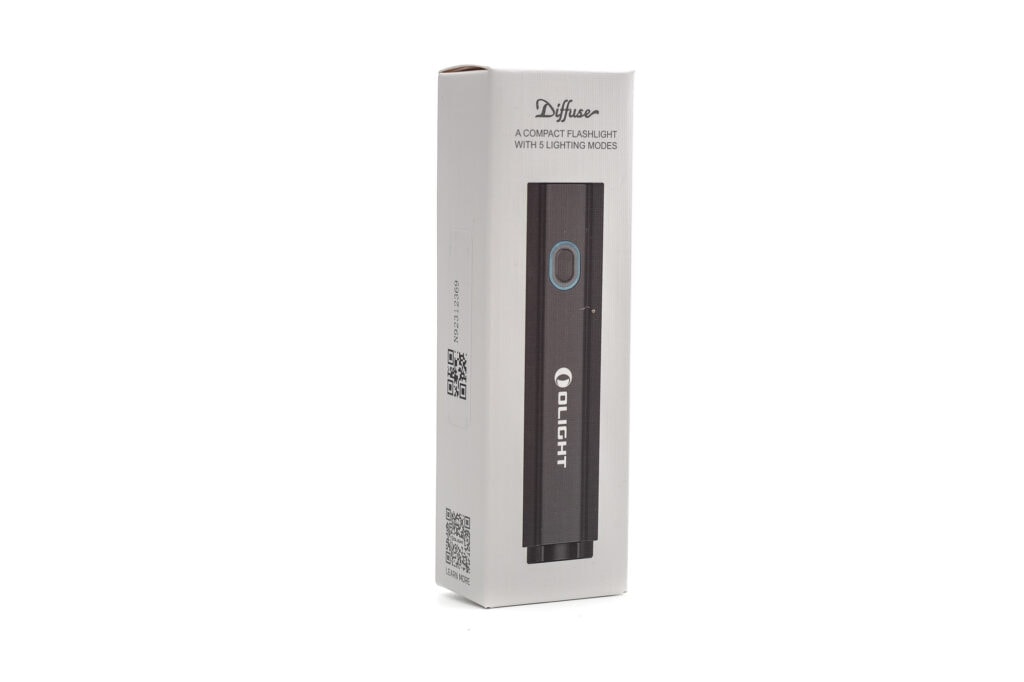
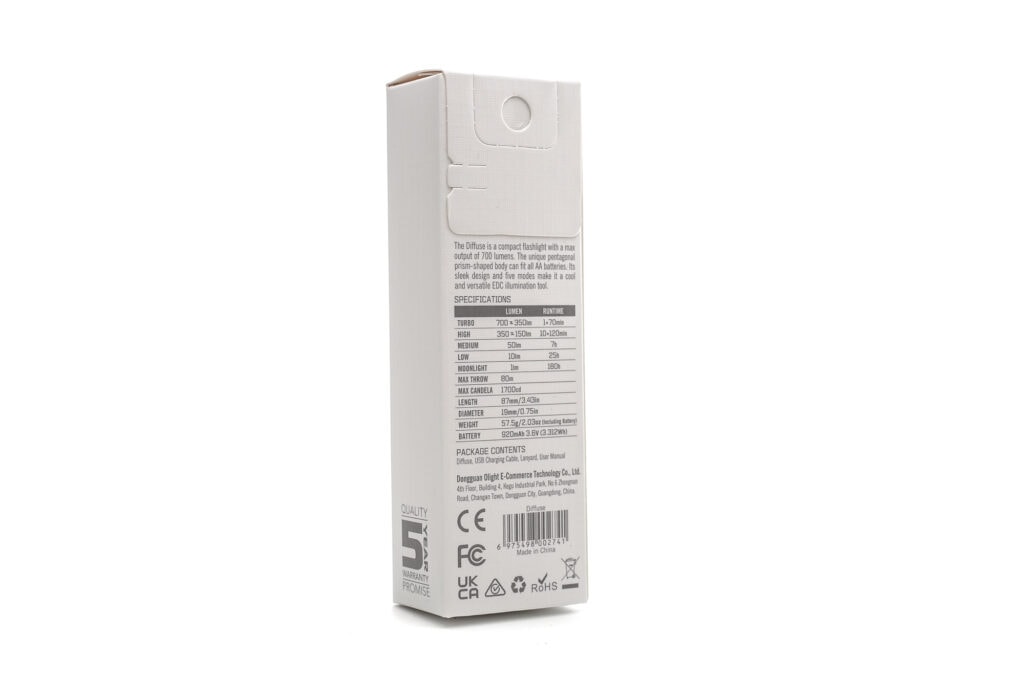
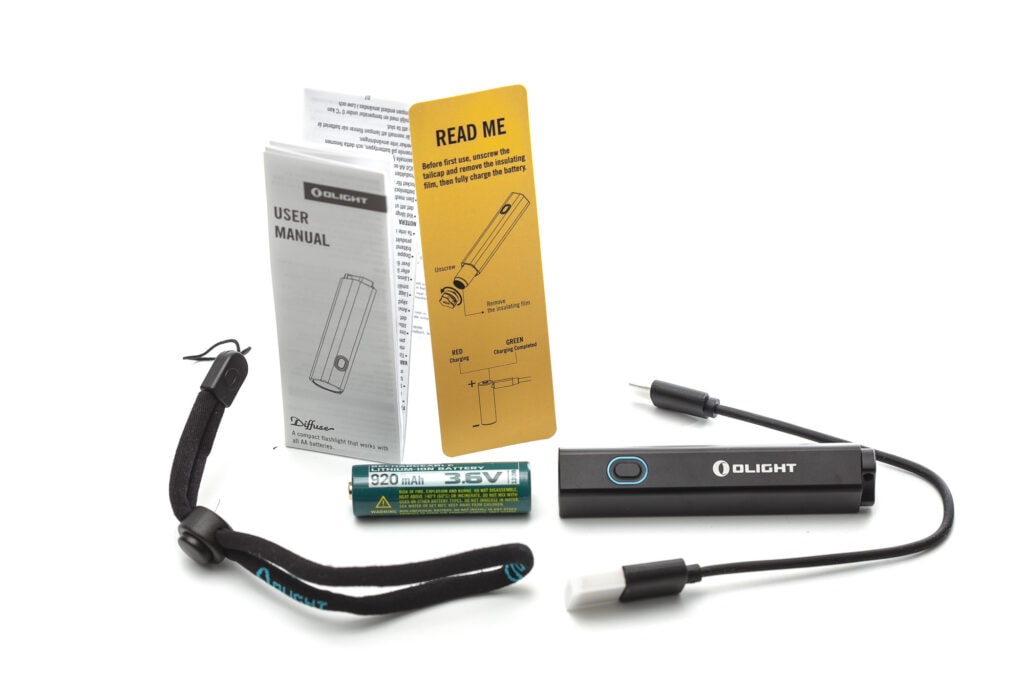
Flashlight in use, Build Quality, and Warranty
The pentagon (5 equal sides) Olight does not come with any knurling, and that’s probably its weakest point, especially considering the EDC nature of it. And therefore handling might not be the best part of this flashlight
Speaking about handling, the Olight Diffuse uses a single e-switch that is pretty small and protruding about half a millimeter without any shrouded protection. I’m not a fan of this type of switch. This type of switch can easily turn on in your pocket. Therefore Olight added a lockout feature, which can be activated when holding the switch for 2 seconds in the Off position. A red light around the switch will let you know it is locked. Each time you press that switch in the Lockout position will make this red light turn on.
Another way to carry the Diffuse is with the included lanyard, which connects to the tailcap of the Diffuse. The tailcap has a hole to attach your lanyard to, and a slot for a glow tube or tritium vial. It’s flat, so you can make it tail stand.
Use cases? Hmmm. It’s probably geared toward EDC use, but I guess it is up to you. Especially considering the lack of knurling and smooth coating, makes it a bit less user-friendly.
The pentagon shape helps as an anti-roll feature, making the flashlight stay in place relatively easy. And in that regard, I guess this could be a nice flashlight to add to your tool kit, or tool box. And since it’s claiming IPX8 waterproofness, you can drop it in a bucket of water/oil without causing any issues.
For warranty, Olight is one of the best in the industry, with a no-hassle 30-day free return policy, and a lifetime warranty. Lifetime means lifetime, and there’s no 5-year limit like there used to be. The new warranty covers the LED, internal batteries, or lenses. Removable batteries are warranted for 2 years, cables, clips, mounts, and remote switches for 1 year.
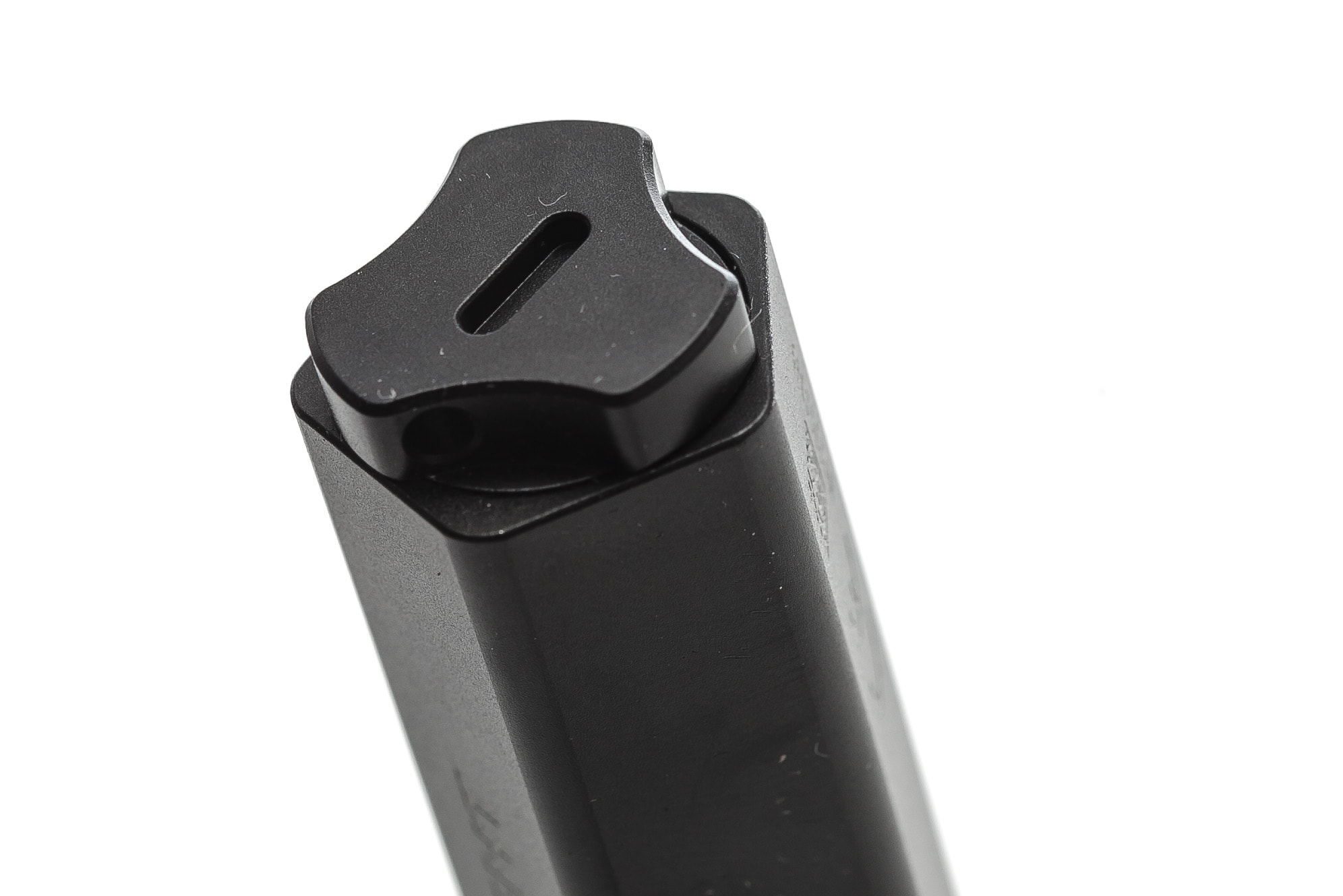

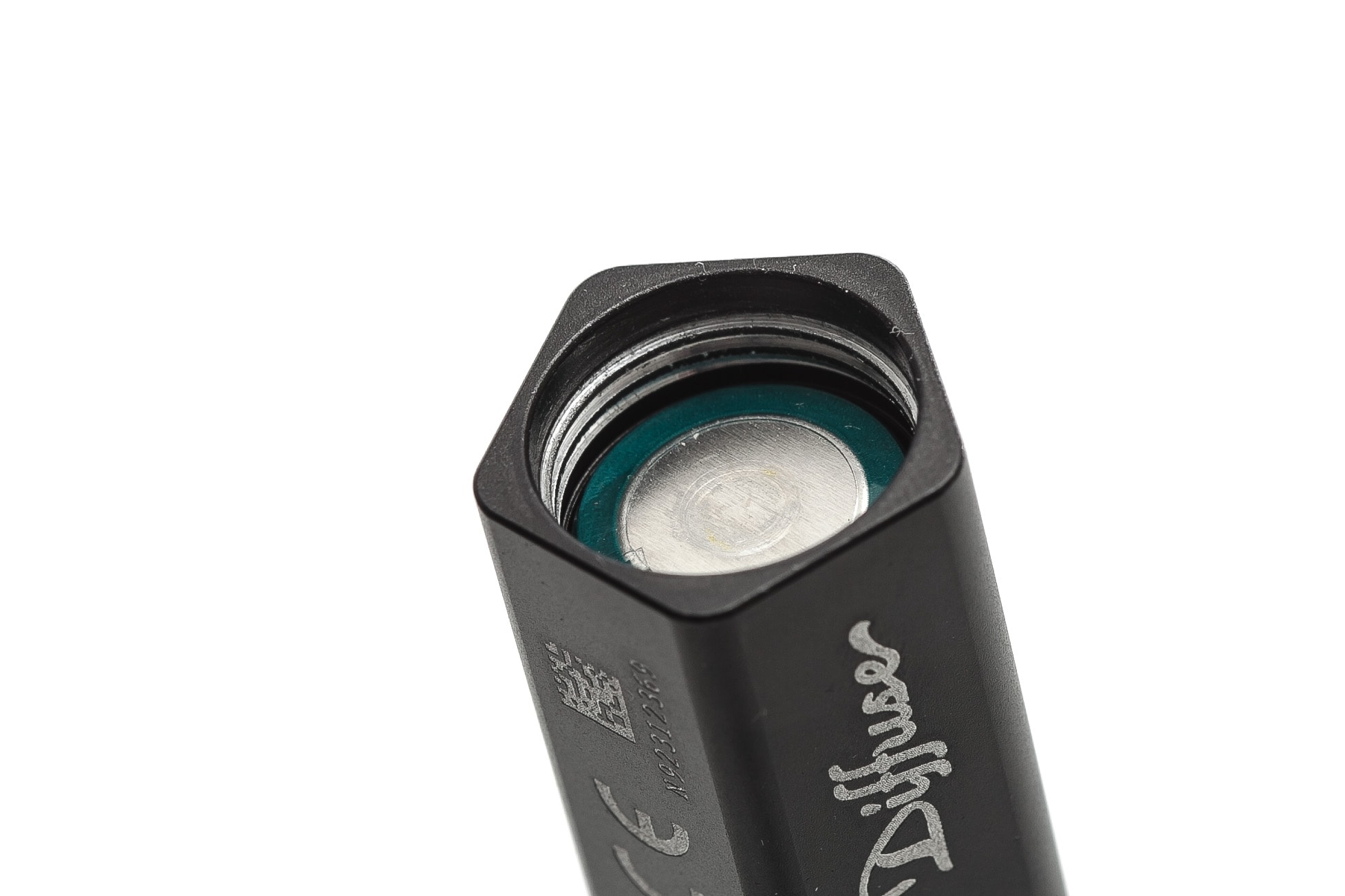
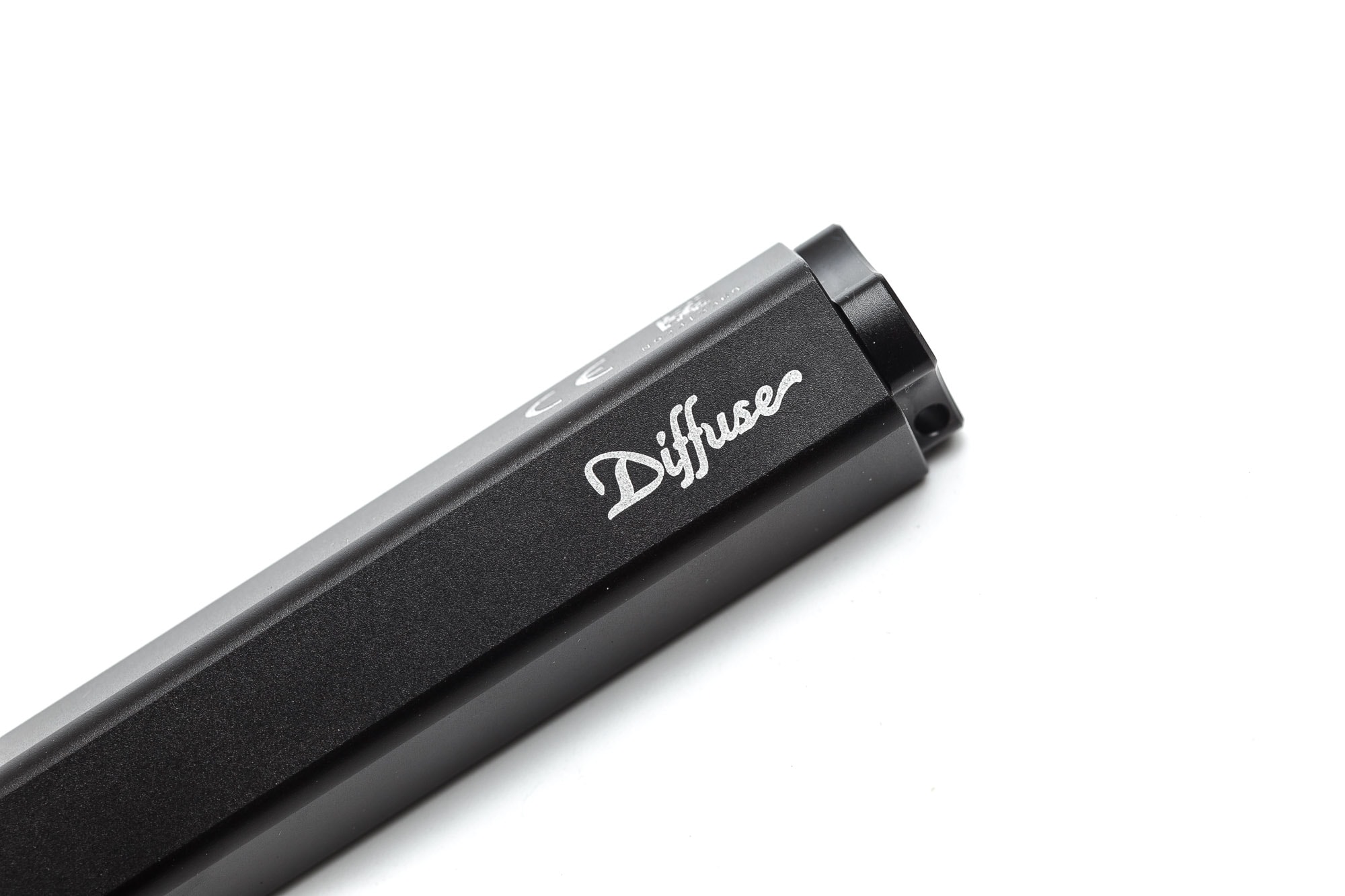
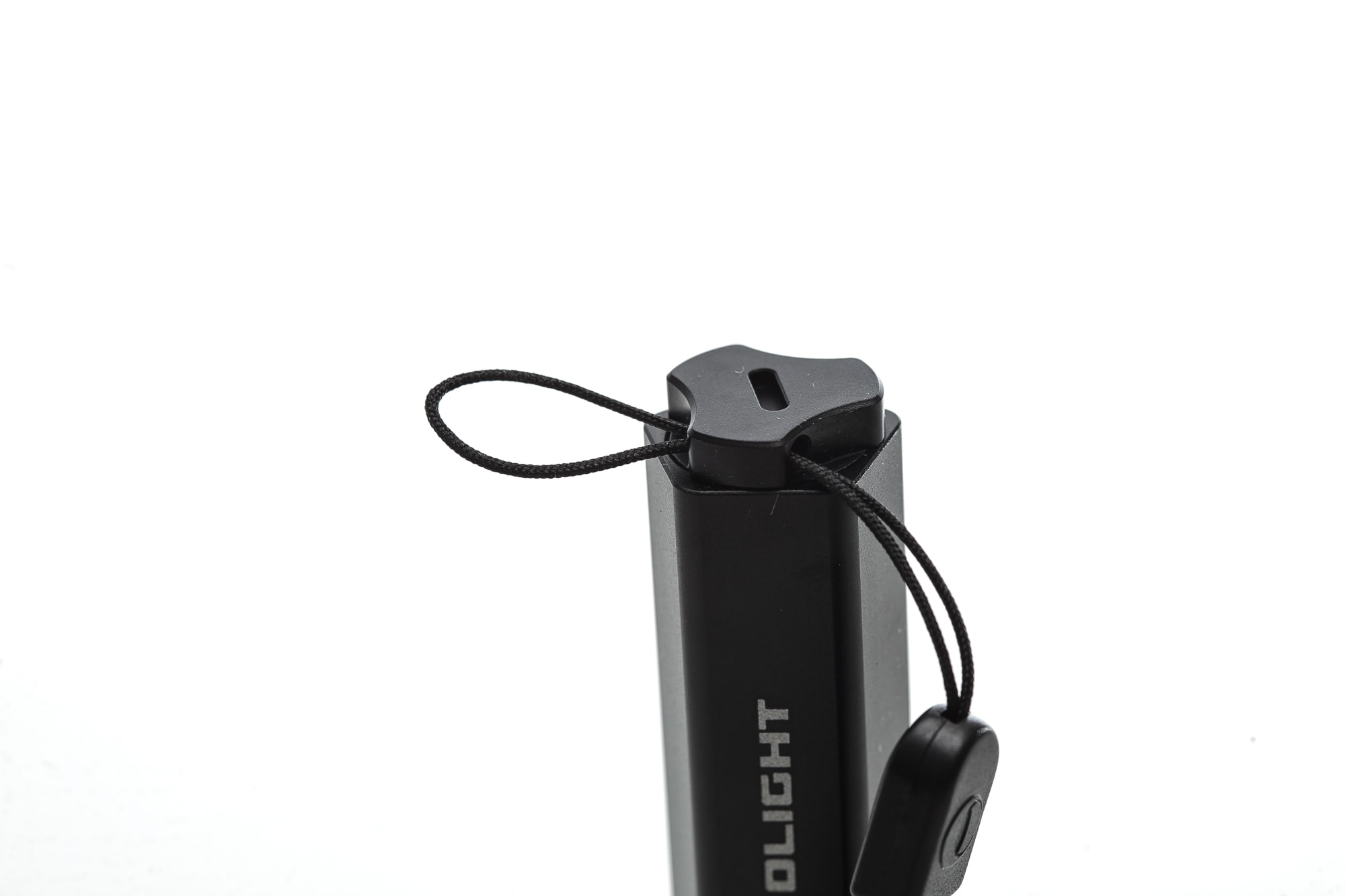
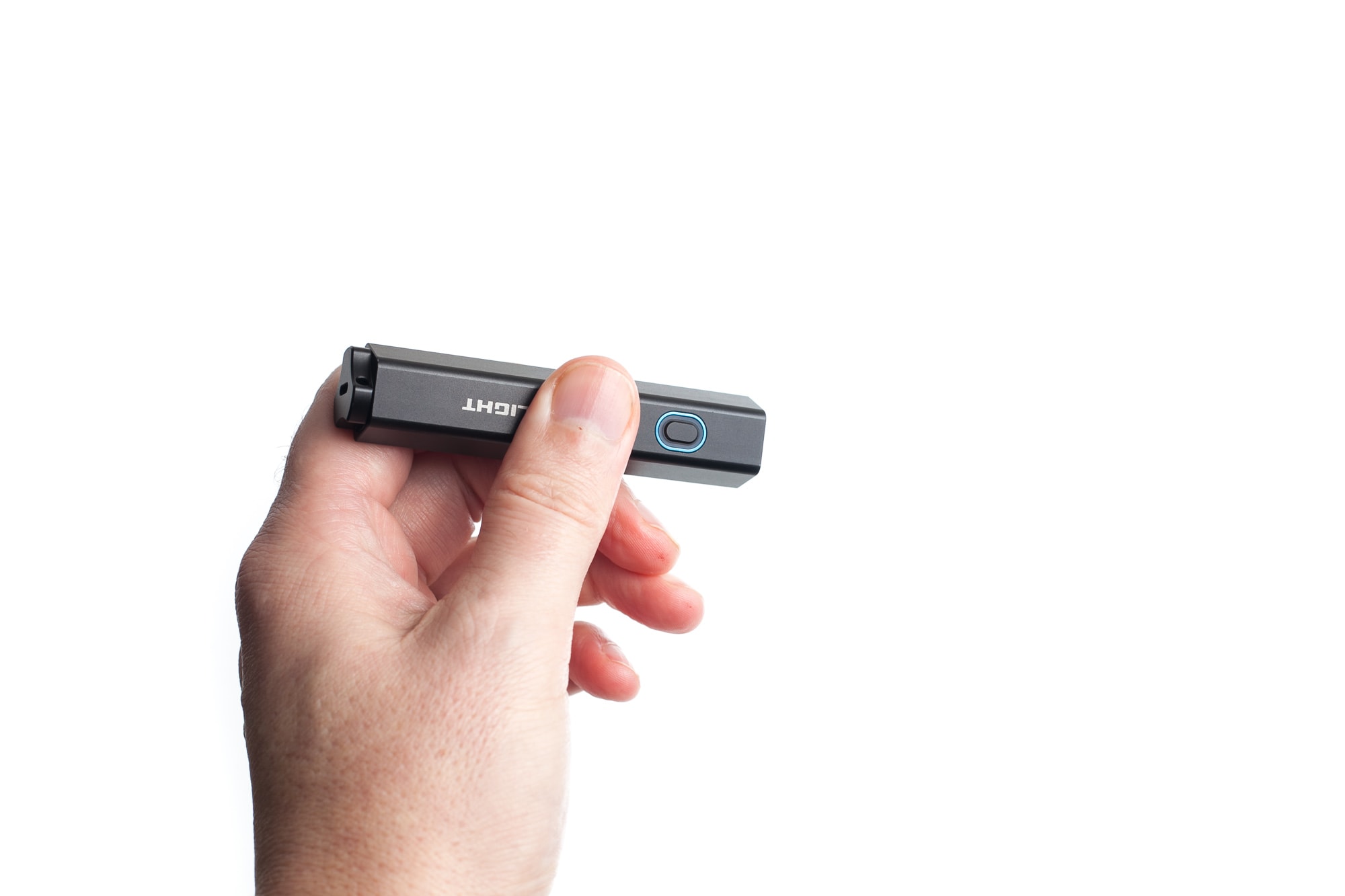
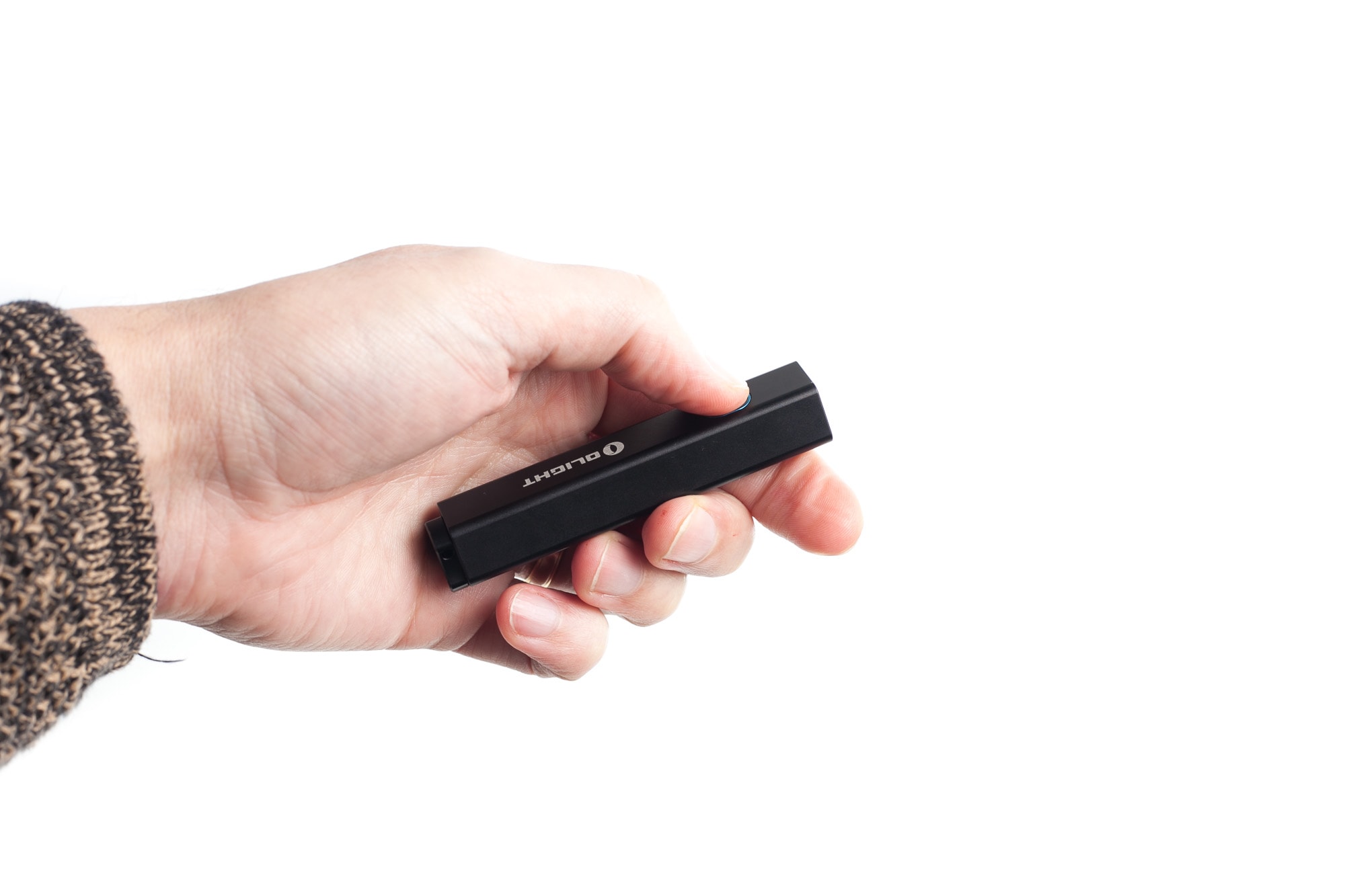

LED, Lens, Bezel, Beam, and Reflector
Olight likes keeping their LED choices a mystery so I can’t tell you exactly what LED the Warrior Nano has, but it looks like an Osram P9, that they use often in their flashlights. It’s cool white, as expected, with Olight specifying 5700-6700K and even a 70 CRI spec. The LED sits under a familiar custom hybrid TIR optic that’s a mix of a reflector and TIR.
There is no bezel, and the front of the Olight Diffuse is flat and smooth, without any crenellation. The beam itself very nice and smooth, with a nice transition between the hotspot and spill.
Spectral measurements:
I used a Sekonic C800 spectrometer to measure the flashlight at 5 meters distance.
| Mode: | CCT: | CRI Ra: | duv |
|---|---|---|---|
| Turbo | 5949K | 70.2 | 0.0059 |
You can see that the beam temperature is cool white, and the CRI low, like 90% of all LED flashlights ever made. The beam is slightly in the green spectrum with a positive duv. But this should never be really a concern, unless you are extremely picky with your preferred LED.
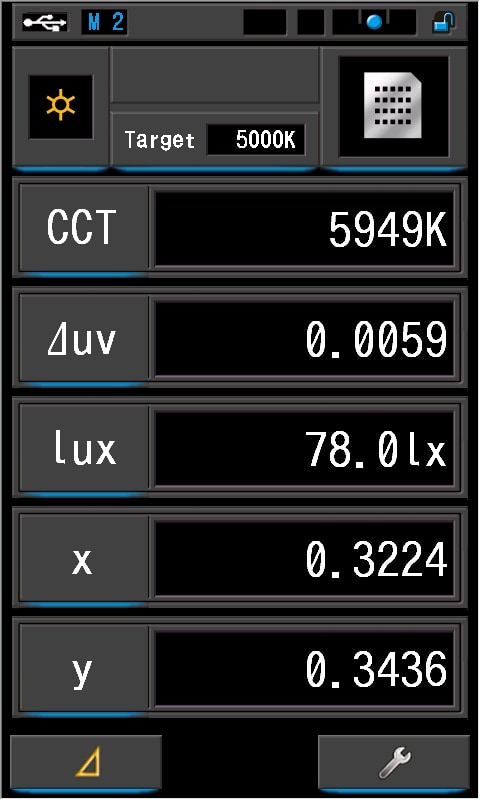
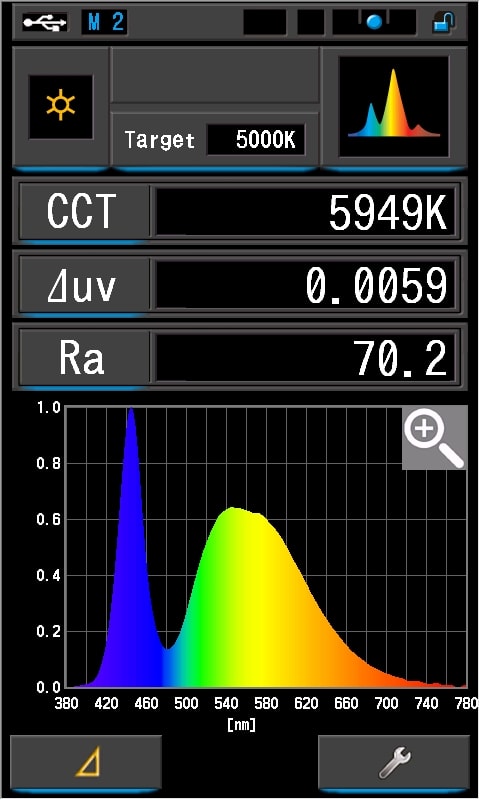
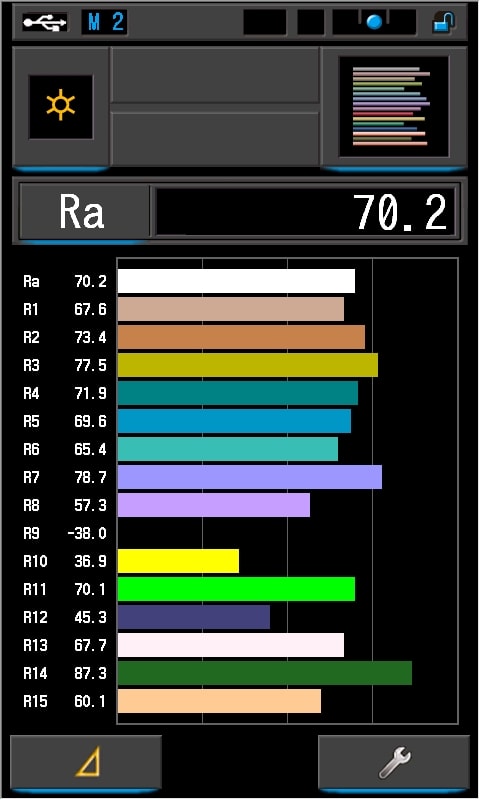
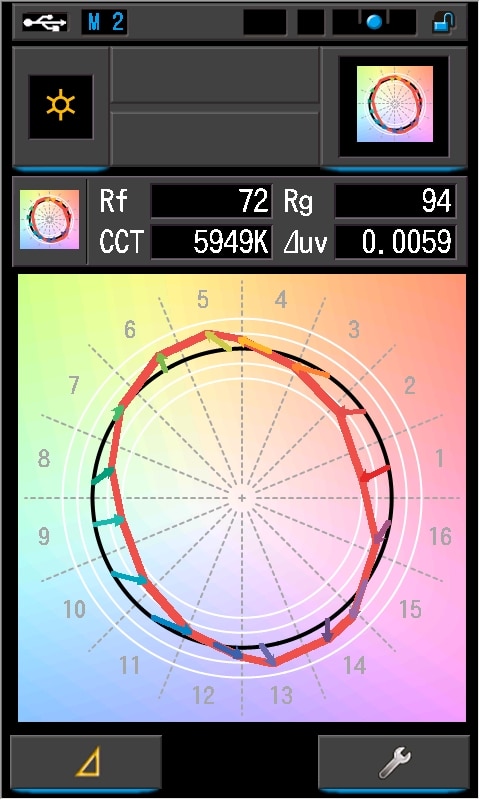
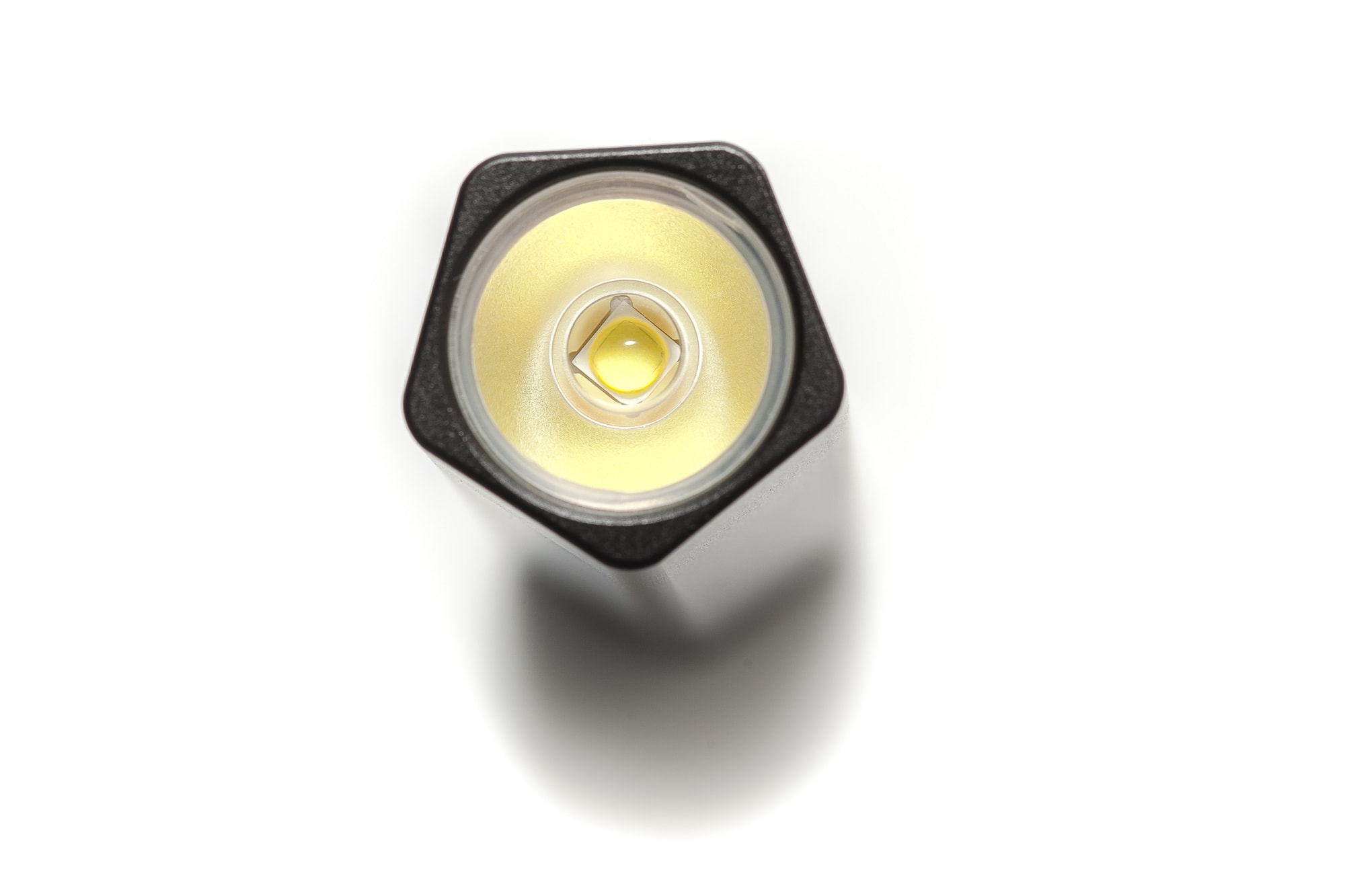
Dimensions and its competition
Dimensions:
| Olight Diffuse | Millimeters | Inches |
|---|---|---|
| Length | 87mm | 3.4 in |
| Body diameter widest part | 20 | 0.8 in |
Dimensions are rounded to the nearest millimeter, and to the nearest tenth of an Inch.
Weight:
| Olight Diffuse | Weight in grams | Weight in oz. |
|---|---|---|
| Without battery: | 37 g | 1.3 oz |
| With battery | 57 g | 2 oz |
Weight is rounded to the nearest gram, and to the nearest tenth of an Oz.
Olight Diffuse Flashlight comparison
Size compared to other AA sized EDC flashlights
From left to right: Fenix E12, Lumintop Tool AA, Olight Diffuse, Olight i5R EOS, Lumintop EDC AA, Acebeam Pokelit AA Gray

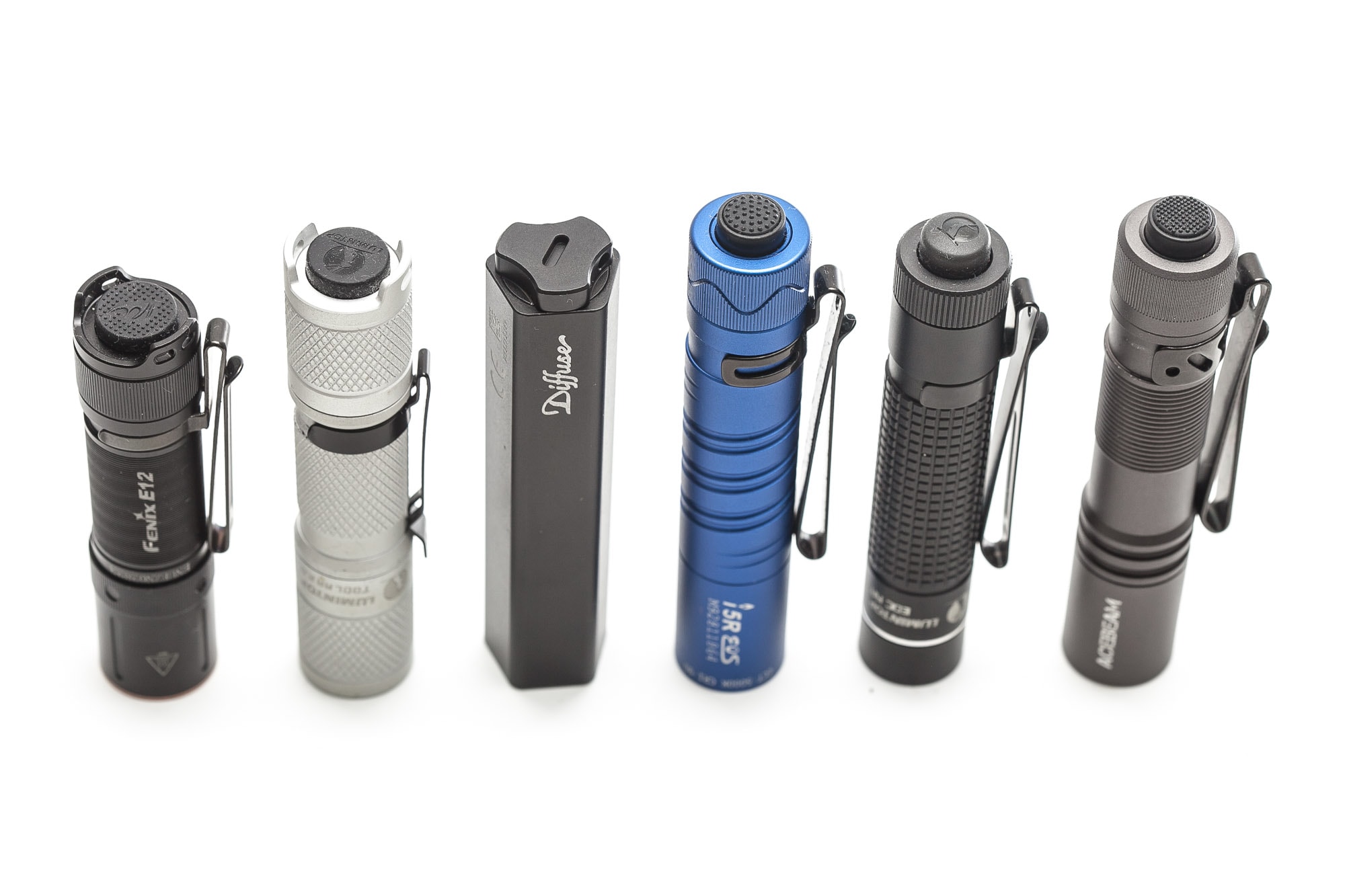
Olight Diffuse UI : User interface and driver
The UI is pretty easy and straightforward, and even without the manual, you’ll be able to figure it out. Especially if you’re an experienced flashlight user.
The available main modes:
- Low, Medium, High, Turbo
The available special modes (blinkies):
- Strobe
How the UI works when the flashlight is still turned OFF:
- Single-click: to last used mode, mode memory. Including Moon, excluding Turbo
- Double click: Turbo (it will first turn on the last used mode, and then jumps to turbo
- Triple-click: strobe
- Press and hold less than 1 sec: Moon
- Press and hold more than 2 sec: Lockout
How the UI works when the flashlight is turned ON:
- Single-click: turns off
- Double click: turbo
- Triple-click: strobe
- Press and hold: run through Low, med high.. (No moon and Turbo are part of this main cycle)
Shortcuts within the UI:
- To Turbo: double click from on/off
- To Moon: long press from off
- To Strobe: triple click from on/off
Mode memory:
- Yes, moon, low, medium and high..
- Turbo and Strobe are not memorize, since you have shortcuts to those.. just the way I like it.
Blinky modes:
- Strobe. Triple click to enter strobe mode. Single click to turn off, or double click to go to Turbo, or long press to go cycle through the normal modes
Low battery warning:
- Yes, via a colored LED, located around the switch
- Green: 60-100%
- Orange: 15-60%
- Red: 0-15%
Lock-out mode:
- Yes, there is an electronic lockout mode. Long press from off for about 2+ seconds. It will shortly turn on in Moon mode, and then turn off.. If you press the switch a red light will show around the switch to indicate lockout activation.
PWM:
- Not visible
Firmware / UI Conclusion:
- The UI is easy and straight forward. However, I don’t particularly like the small switch.
Olight Diffuse Charging and batteries
The Olight Diffuse uses an Olight ORBC-145C09, 920 mAh, 14500cell. The battery arrived at 3.78V, which is good. It’s a customized battery (according to the manual) with a USB-C port near the positive terminal. This means that you don’t need to have an Olight Magnetic charging cable, and you also don’t have to have a dedicated Lithium-Ion battery charger. The battery wrapper mentions the following:
Non-universal battery, do not install in any other product to avoid the product damage. Only charge with USB-C.
I must admit that I only used the USB-C port for testing, because its charge current s pretty low. During the test the charge took 3 hours and 29 minutes.. So 3.5 hours.
It’s interesting to note that the manual says the following: Batteries compatible: 1*AA battery: compatible. But, when I tried an Eneloop AA battery, it didn’t turn on. So I would forget about using an AA battery. AA batteries don’t work.
| Charge type | Fits | No fit | Charge time |
|---|---|---|---|
| Battery onboard USB-C | All 14500 | AA batteries | 3h 29minutes |
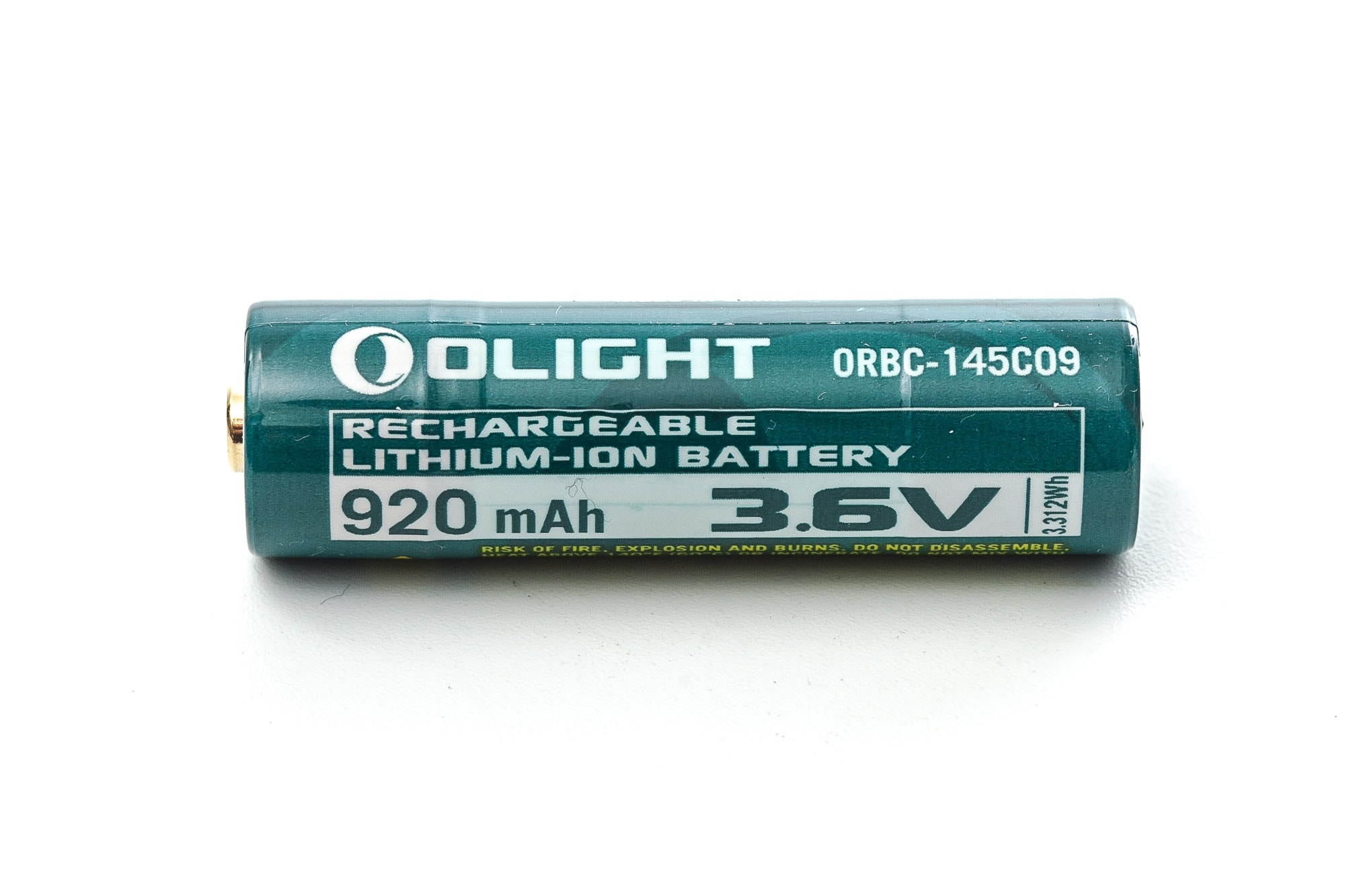
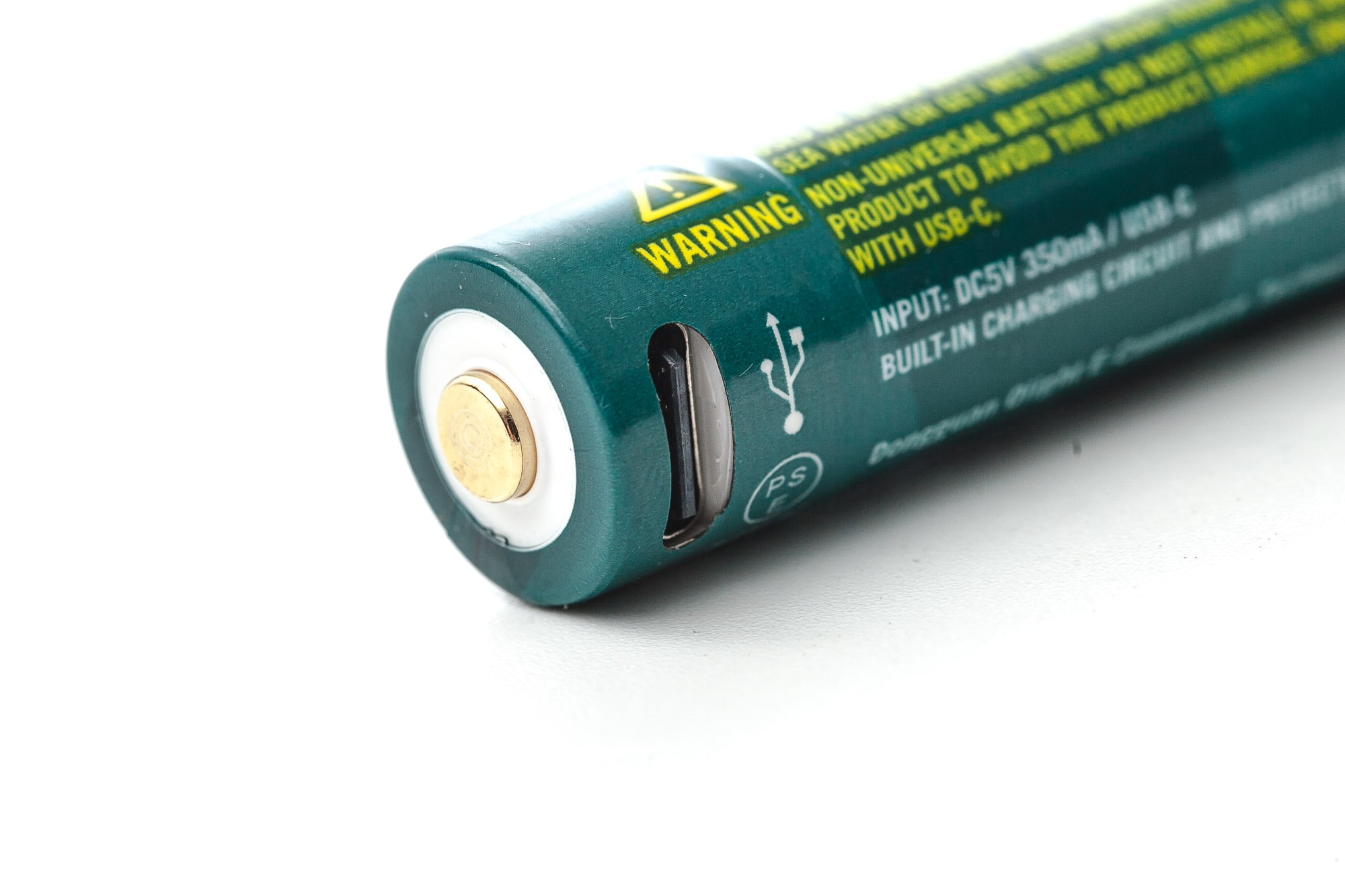
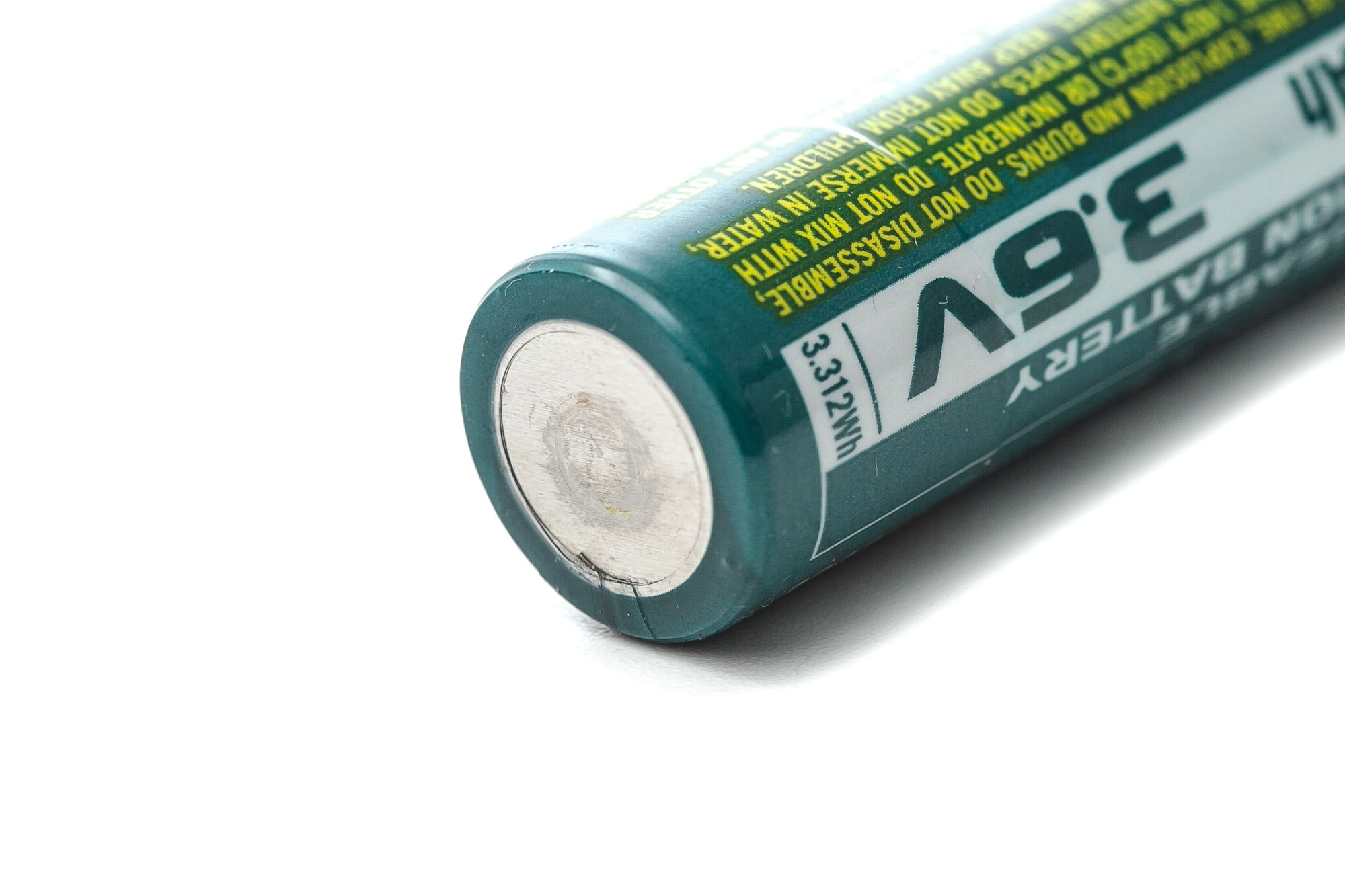
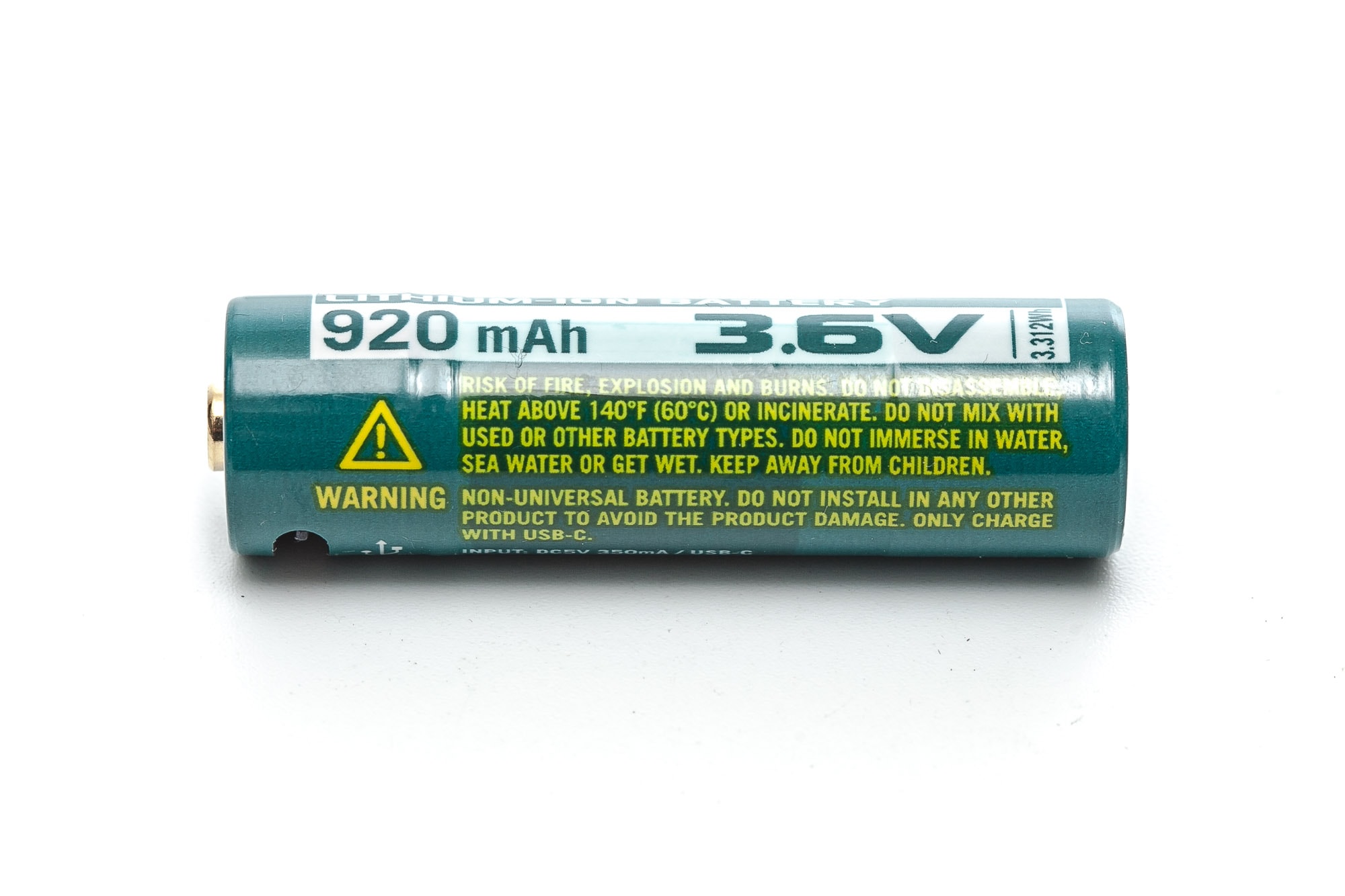
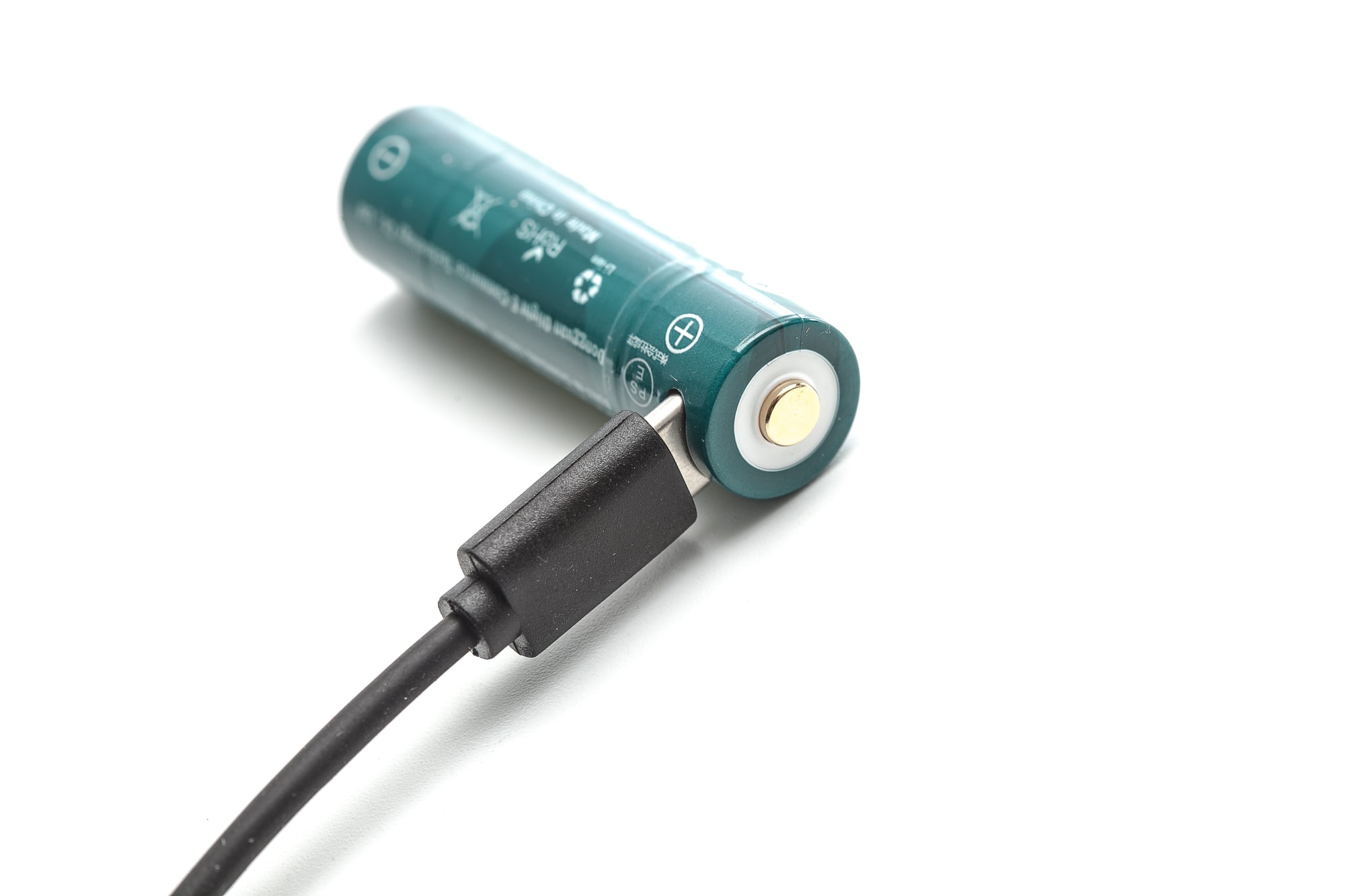
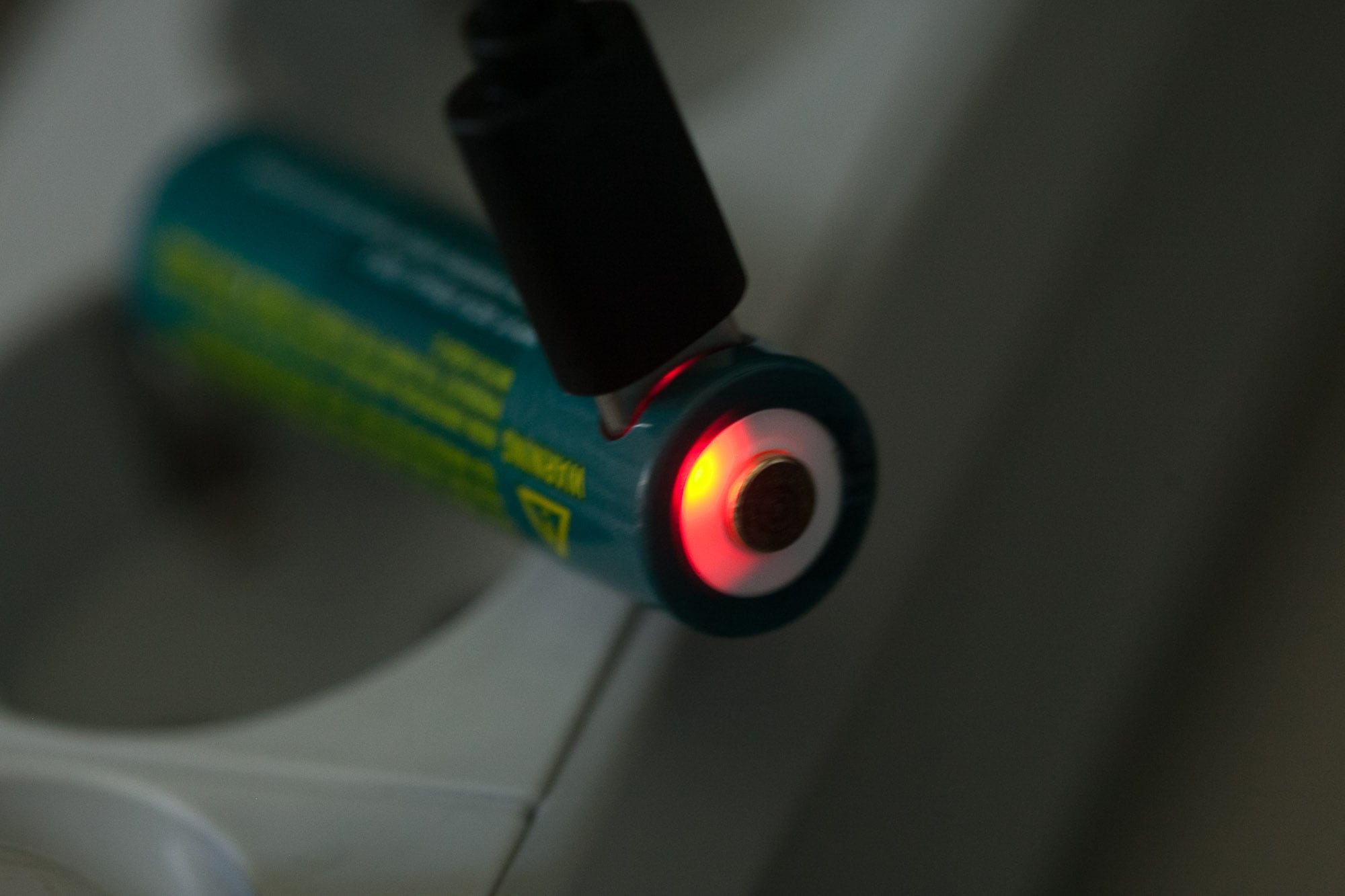
Performance test
This is the gear I use for testing:
| Gear | Purpose | Link to buy |
|---|---|---|
| Hagner E4-X | Measuring beam intensity (throw) | Inquire at Hagner.se |
| 2* Extech SDL400 | Lumens and logging runtimes | Amazon.com, Amazon.co.uk, |
| Leica Disto D2 | Distance for throw measurements | Amazon.com, Amazon.co.uk, |
| Sekonic C-800 | Spectrometer for LED measurements | Amazon.com, Amazon.co.uk |
| Uni-T UTi260B | Thermal Image camera | Amazon.com, |
Lumen measurements:
How Lumens are Measured: Understanding ANSI FL1 Standards How Lumens are Measured: Understanding ANSI FL1 Standards: The ANSI FL1 standards specify that output in lumens should be measured 30 seconds after turning on, as this is the standardized time for measuring brightness according to the industry standard. This is why we focus on this part in our measurements. The ANSI FL1 standards require an ambient temperature of 22 ± 3°C. We record the ambient the ambient temperature to identify potential reasons for any observed discrepancies.The output measurements in this review are based on my homemade integrating spheres, each equipped with an Extech SDL400 Lux Meter. For consistency and accuracy, a calibration light (Convoy S2+ with 249lm and a Convoy S2+ with 261lm) is measured prior to each set of lumen measurements.
For high-output lights, one of the lux meters uses an ND camera filter to prevent the lux meter to max out. This is either the Kenko PRO1D ND16 up till about 80,000 lumens or Gobe ND32 for anything above.
All of my readings were taken from a fully-charged Olight ORBC-145C09 battery.
The measurements were taken manually at turn on and 30 seconds. The 10 minute numbers are taken from the runtime graph.
| Mode | Specified | At turn on | 30 sec | 10 minutes |
|---|---|---|---|---|
| Moon | 1 lm | 1 lm | 1 lm | – |
| Low | 10 lm | 10 lm | 10 lm | 10 lm |
| Med | 50 lm | 56lm | 56lm | 56lm |
| High | 350 lm | 362lm | 356lm | 296lm |
| Turbo | 700 lm | 707lm | 666lm | 345lm |
I try to use rounded lumen numbers, except for maybe Low or Moonlight/Firefly modes.
Parasitic drain:
- 0.07 µA
- Microamps (µA): 1mA is 1,000µA, so it would take many months to discharge.. so you don’t need to worry about this parasitic drain.
Olight Diffuse Battery life and runtime
How Runtimes are Measured: Understanding ANSI FL1 Standards About ANSI FL1 runtime standards: The runtime is measured until the light drops to 10% of its initial output (30 seconds after turning on). This does not mean that the flashlight is not usable anymore. The last column shows how long the light actually works till it shuts off. If there is a + symbol, it means that the test was stopped at that particular point, but the light was actually still running. This happens on certain occasions, with certain drivers, firmware, or batteries.Runtime tests were conducted in my 50cm home made integrating sphere, paired with the Extech SDL400 data logging Lux Meter.
| Mode | Specified | Measured runtime (ANSI FL1) | Time till shut off |
|---|---|---|---|
| Moon | 180h | – | – |
| Low | 25h | 33h 09min | 33h 09min |
| Med | 7h | 7h 17min | 7h 17min |
| High | 2h 10min | 2h 26min | 2h 26min |
| Turbo | 1h 11min | 1h 07min | 2h 05min* |
I didn’t test the runtime for Moon mode. You see that the runtimes are pretty close to spec, except for Low mode, which ran 8 hours longer than specified. Not bad!
Turbo dropped to 10% after 1 hour and 7 minutes, but kept running or almost 1 more hour, and finally shut off after 2 hours and 5 minutes. As you can see Olight still used the ANSI measurements, while other smaller companies would likely just say: 2 hours of runtime. This makes Olight more trustworthy than many other companies.
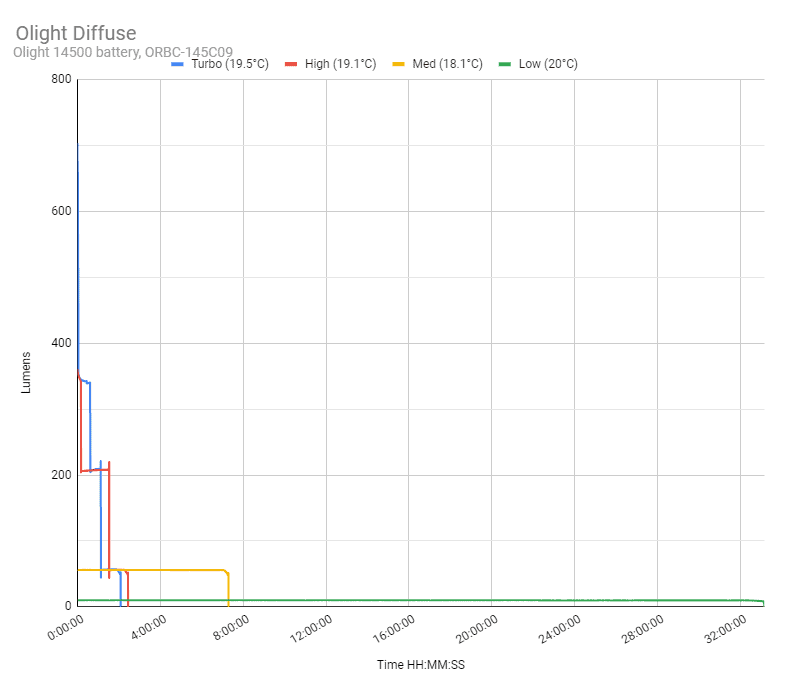
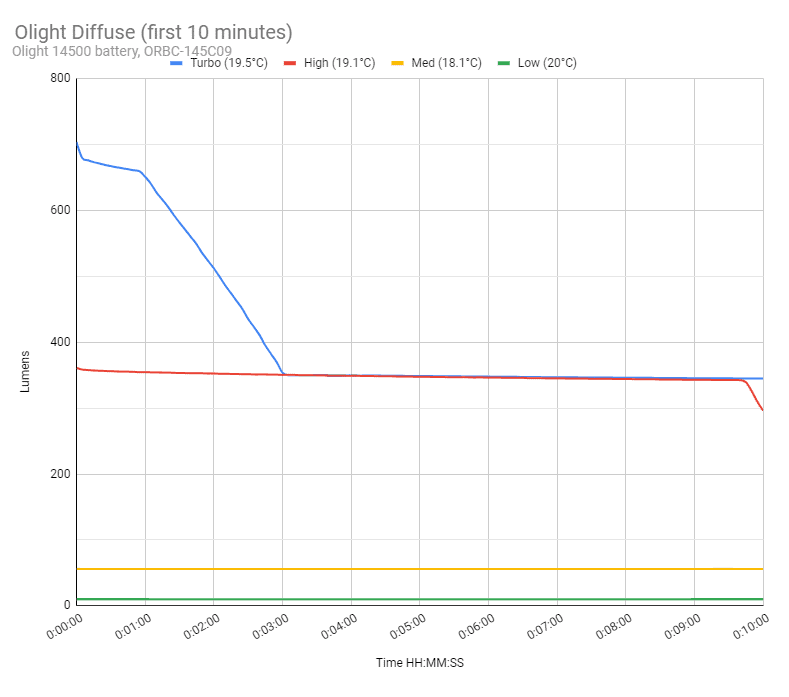
Olight Diffuse Peak beam intensity and beam distance measurements
About Peak beam intensity: Understanding ANSI FL1 Standards About peak beam intensity The calculated value of distance in meters at which the flashlight produces a light intensity of 0.25 lux. (0.25 lux is about the brightness of a full moon shining on an object). This means that the intensity has decreased so much, it becomes difficult to see darker objects, or objects that don’t reflect light. The columns ‘Meters’ and ‘Yards’ use rounded numbers.Measurements were taken indoors at 5 meters with a Hagner E4-X Lux Meter. The measurements were taken 30 seconds after turn on.
Moon and Low were too weak to measure at 5 meters, and both registered 0lux.
| Mode | Specified | I measured | Meters | Yards |
|---|---|---|---|---|
| Med | – | 175 cd | 26 | 29 yd |
| High | – | 1,100 cd | 66 | 73 yd |
| Turbo | 1,700 cd | 2,050 cd | 91 | 99 yd |
My turbo measurement was slightly higher than advertised.
Beamshots
For the following beamshots, I used a Canon EOS 5D Mk2 with a 50mm lens. Manual settings: ISO1600, 1/4sec, F4, 5000K
The shed is about 65 meters / 71 yards away, and the reflective fence about 200 meters.
Explore and compare the beamshots from the following flashlights:
- Olight Diffuse
- Olight Baton 3
- Olight Arkfeld Ti
- Olight Perun 2 Mini
- Vosteed Rook
- Wuben X2
Please note that beamshots are mainly intended to showcase the beam pattern and beam quality, rather than overall performance. These images are typically taken directly after activation, and do not fully represent its overall performance. For accurate performance metrics, such as output, beam distance, and runtimes, you need to look at the performance section of this review.

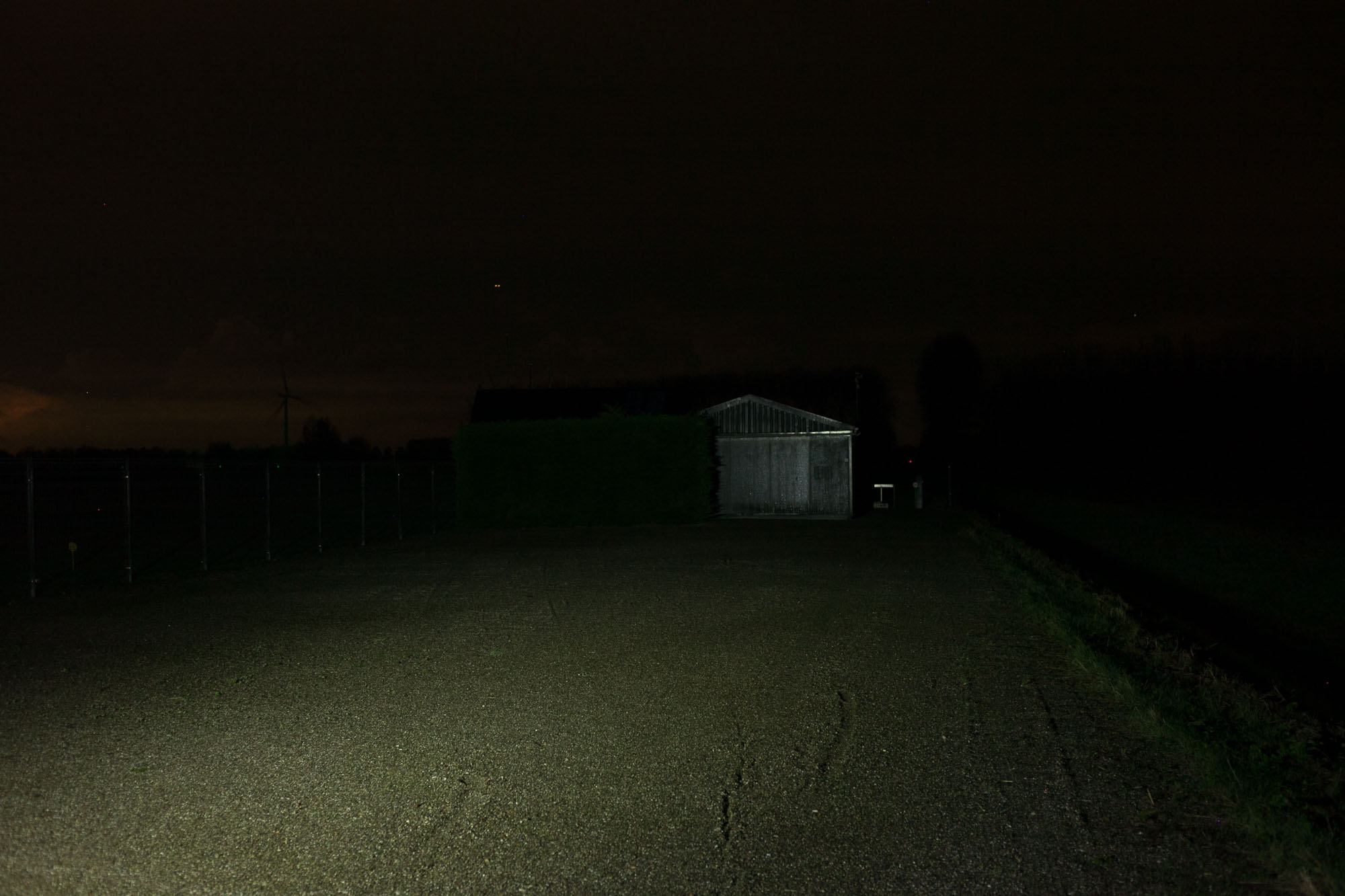
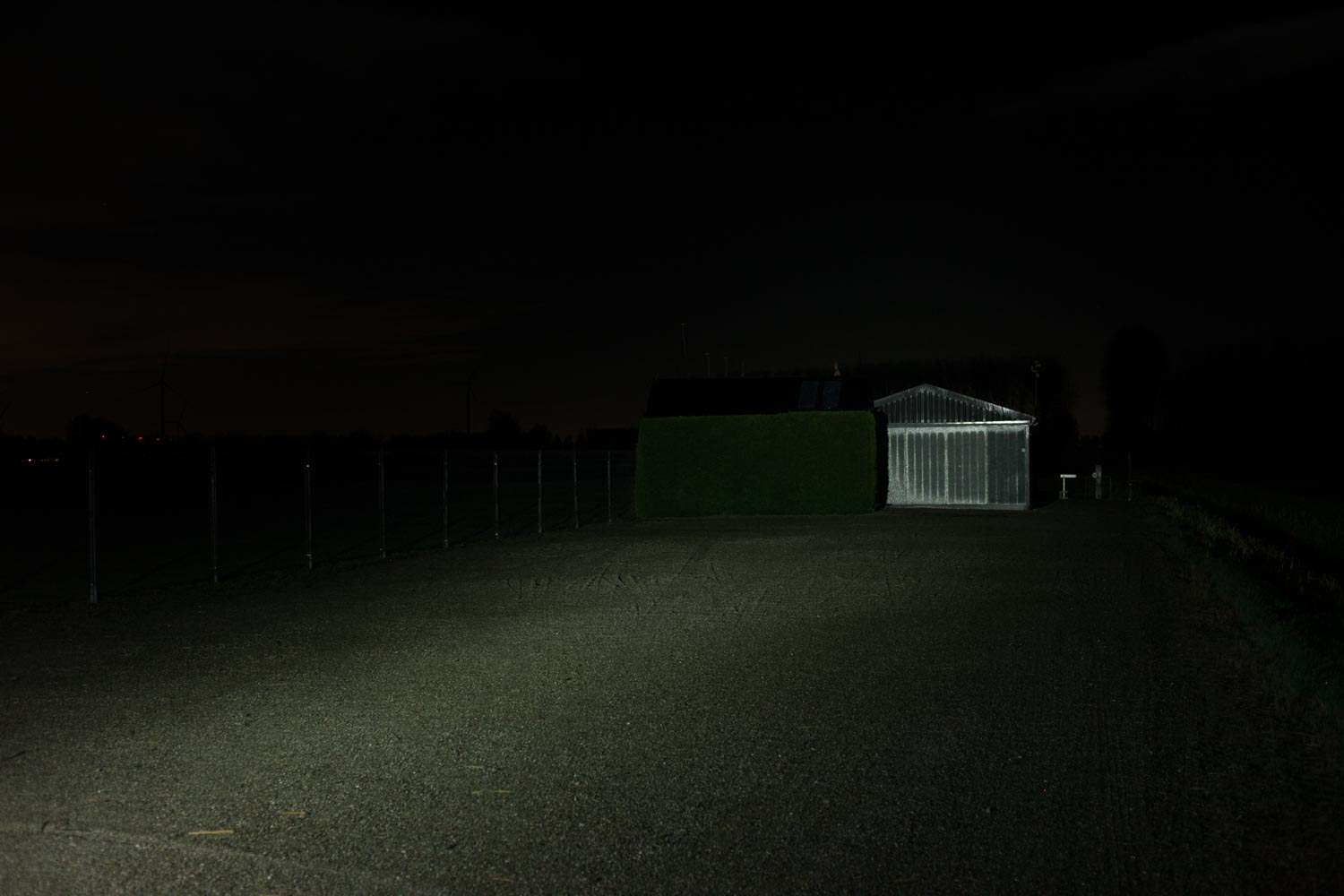
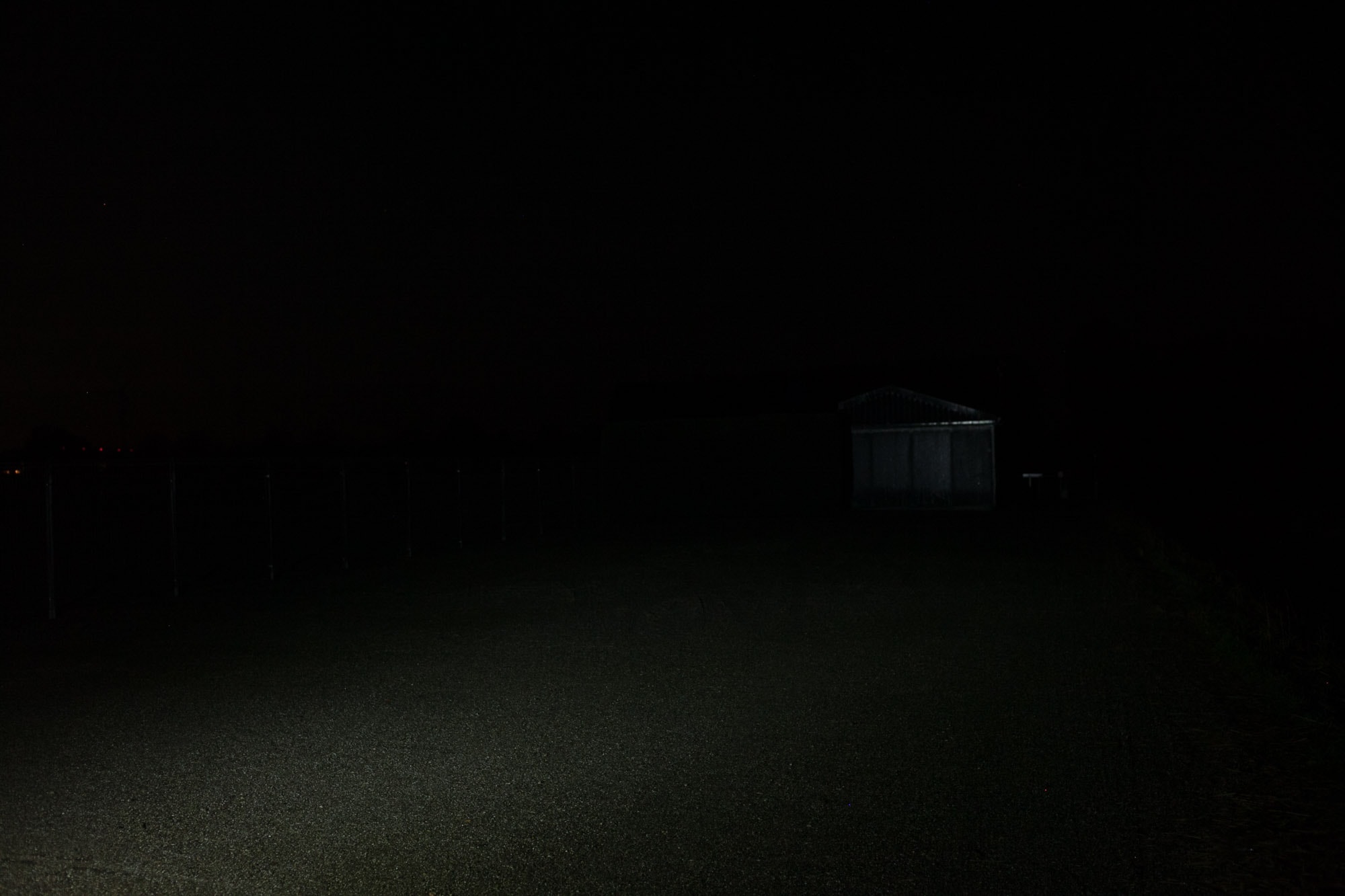
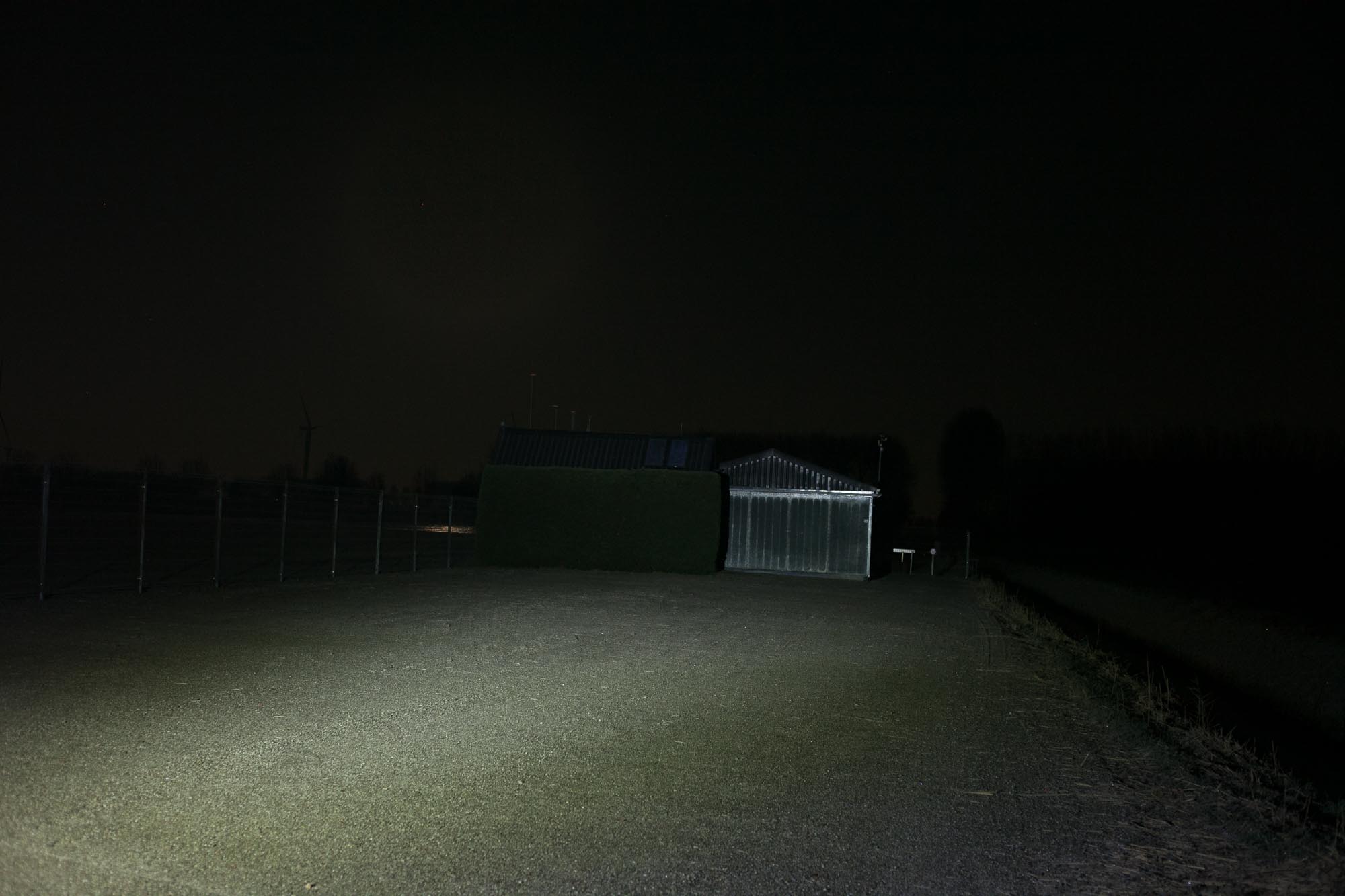
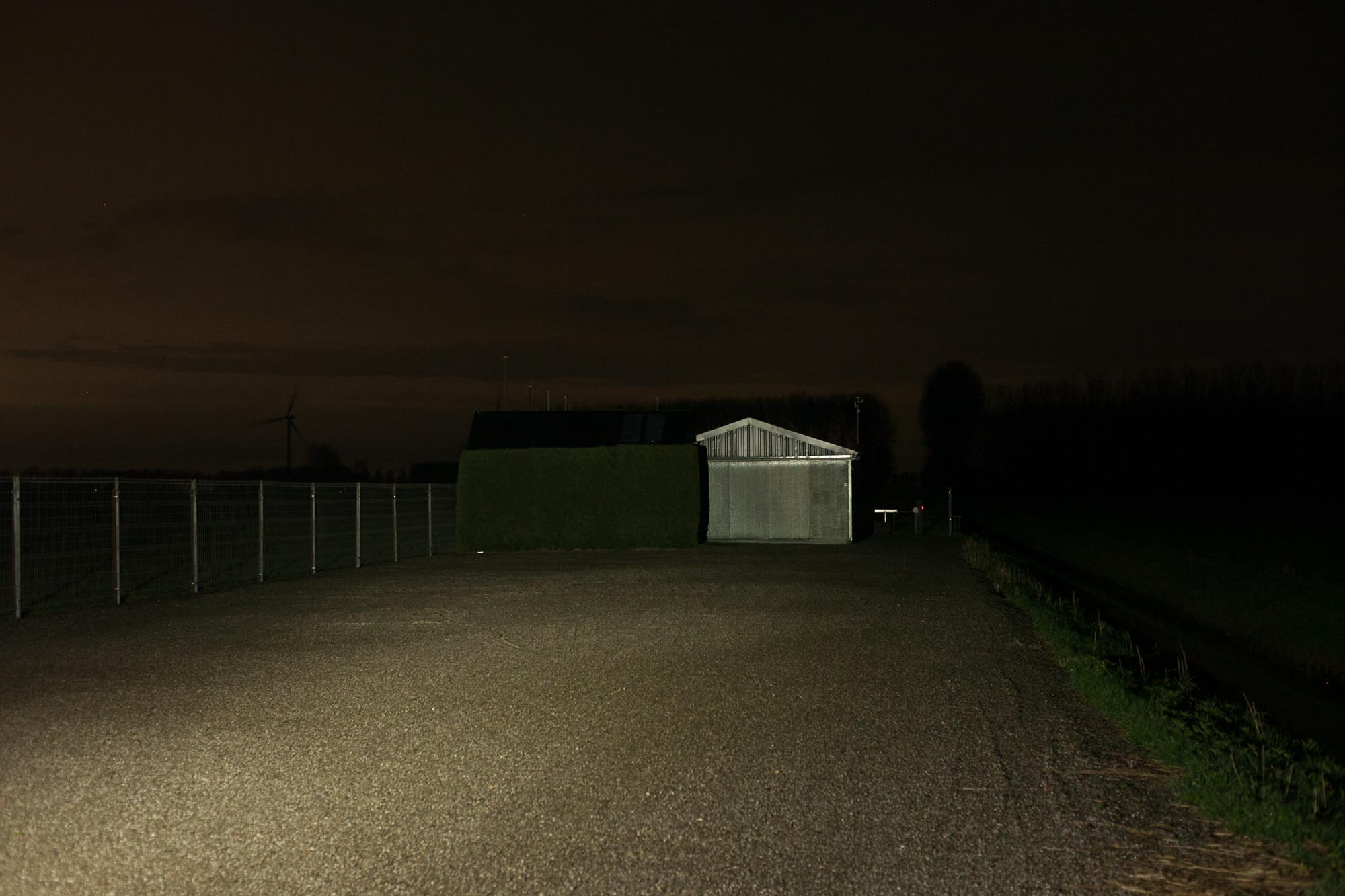
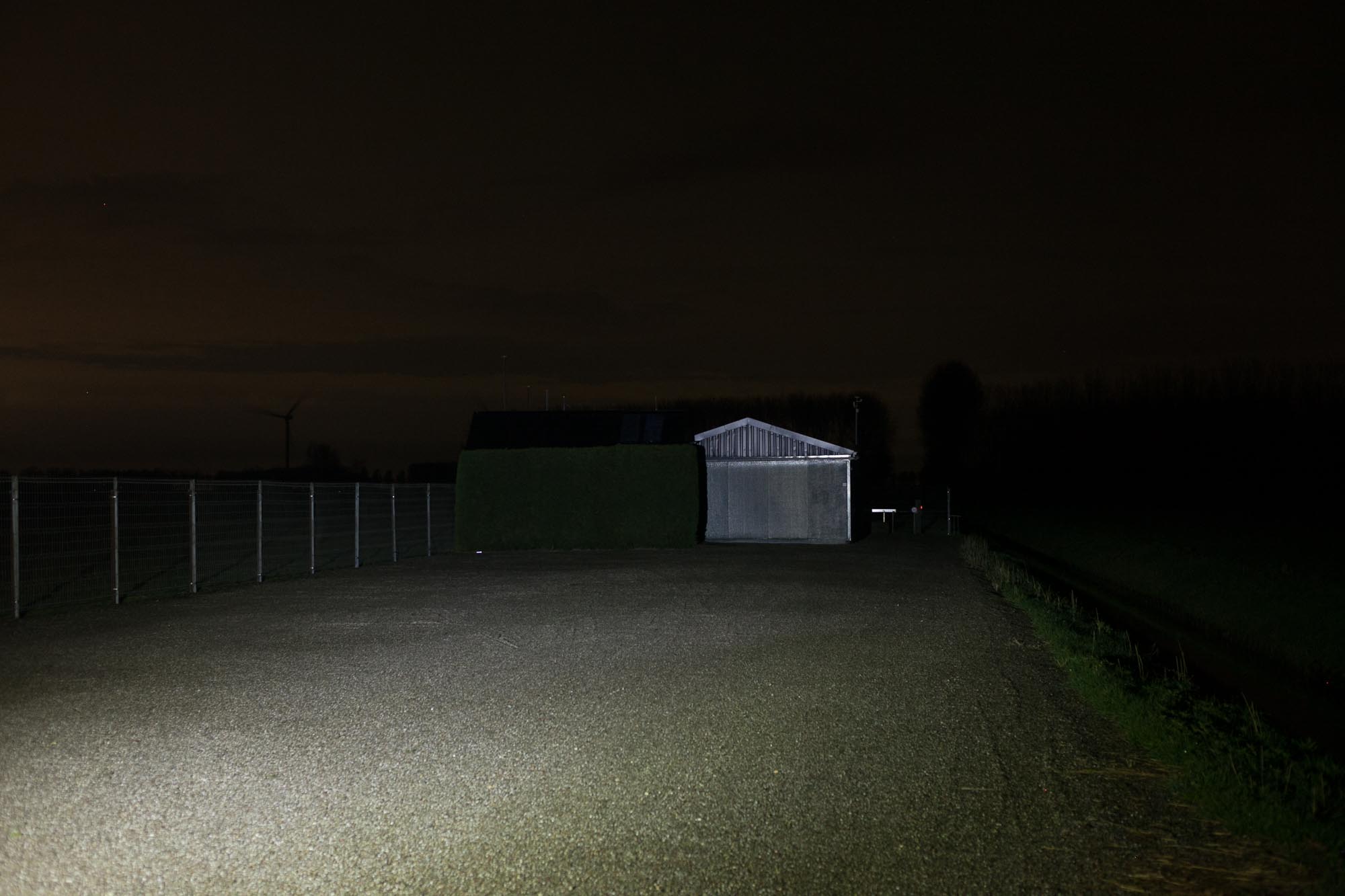
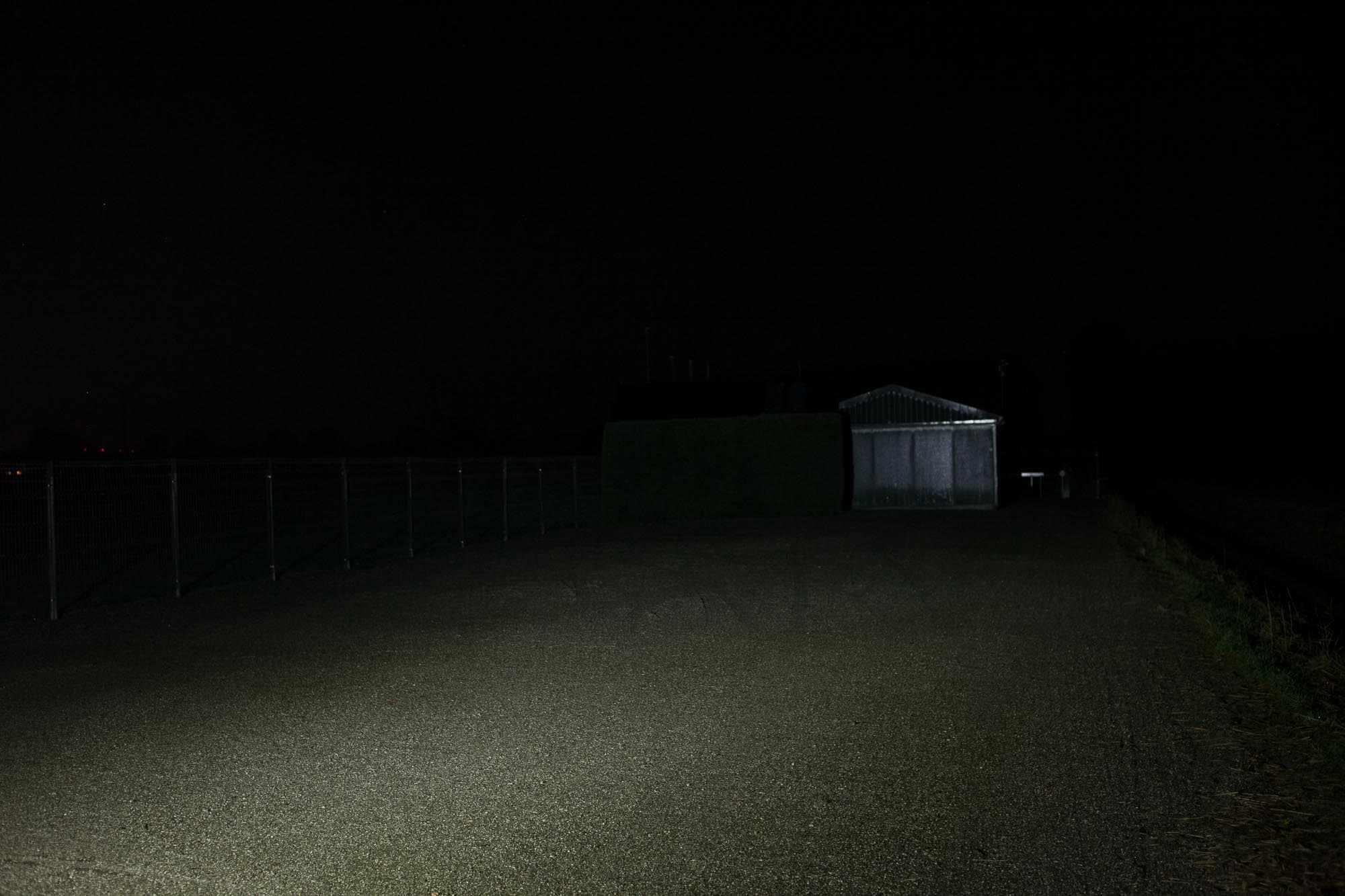
Disclaimer: This flashlight was sent to us for review at no cost by Olight. We have not been paid to review, nor have we been holding back on problems or defects.
Final Verdict
Pros
- Good performance
- Smooth beam
- No PWM
- Includes rechargeable battery with USB-C
Cons
- Slippery
- Odd shape
- Switch is too small without much feedback
- Tailcap is hard to remove
Explanation on star ratings:
1: Avoid: my phone flashlight would be a better choice – 2: Poor: significant defect or issues; almost unusable – 3: Average: some defects or issues; but still usable 4: Good: recommended (minor issues) – 5: Great: highly recommended
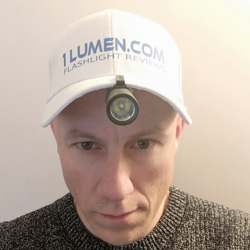
3.5 stars: ★★★⋆
While our star rating provides a reliable indicator, we encourage you to read the full review to make an informed decision based on your own needs and preferences.
Olight makes many great products, and many of their lights are great. They tend to have some of the best performance, combined with interesting features.
But, the Olight Diffuse is not one of them.
The odd shape, combined with a lack of knurling, and the tiny switch makes it less than ideal for EDC use. If they had made the switch bigger (wider) it would have been a bit of a different story. A bit, because the tailcap is also not very practical, so Olight probably needs to have another look at this one.
To finish this review on a more positive note: it does have a pretty nice and smooth beam, good performance, and it includes a rechargeable battery with USB-C port. But that’s all.
Buy your Olight Diffuse with a discount?
Use our exclusive 1lumen discount code to get an extra 10% off anything you order at Olightstore.com (USA). Coupon code: 1lumen
1lumen selects and reviews products personally. We may earn affiliate commissions through our links, which help support our testing.